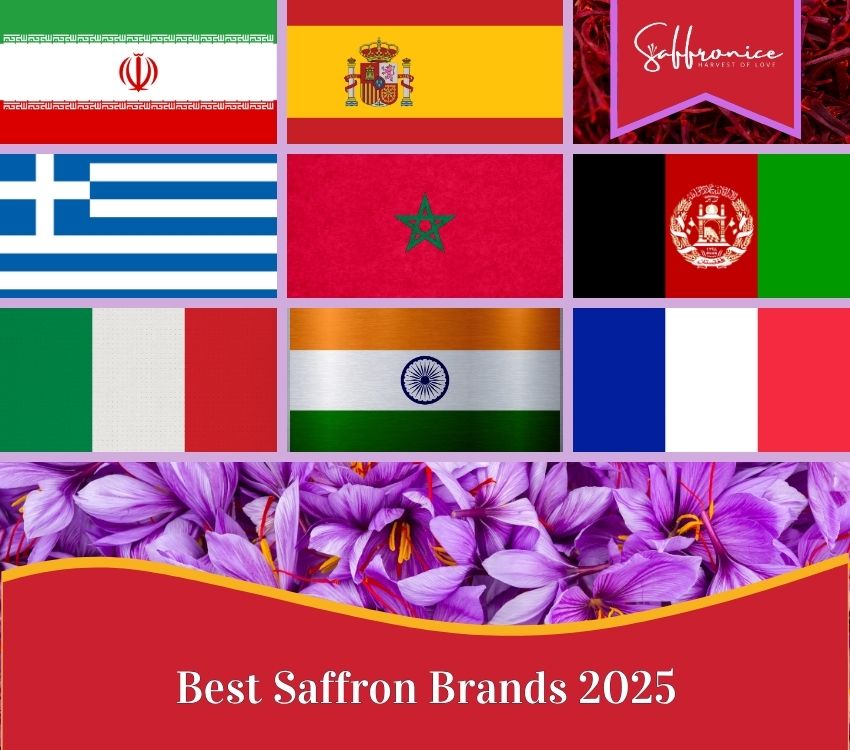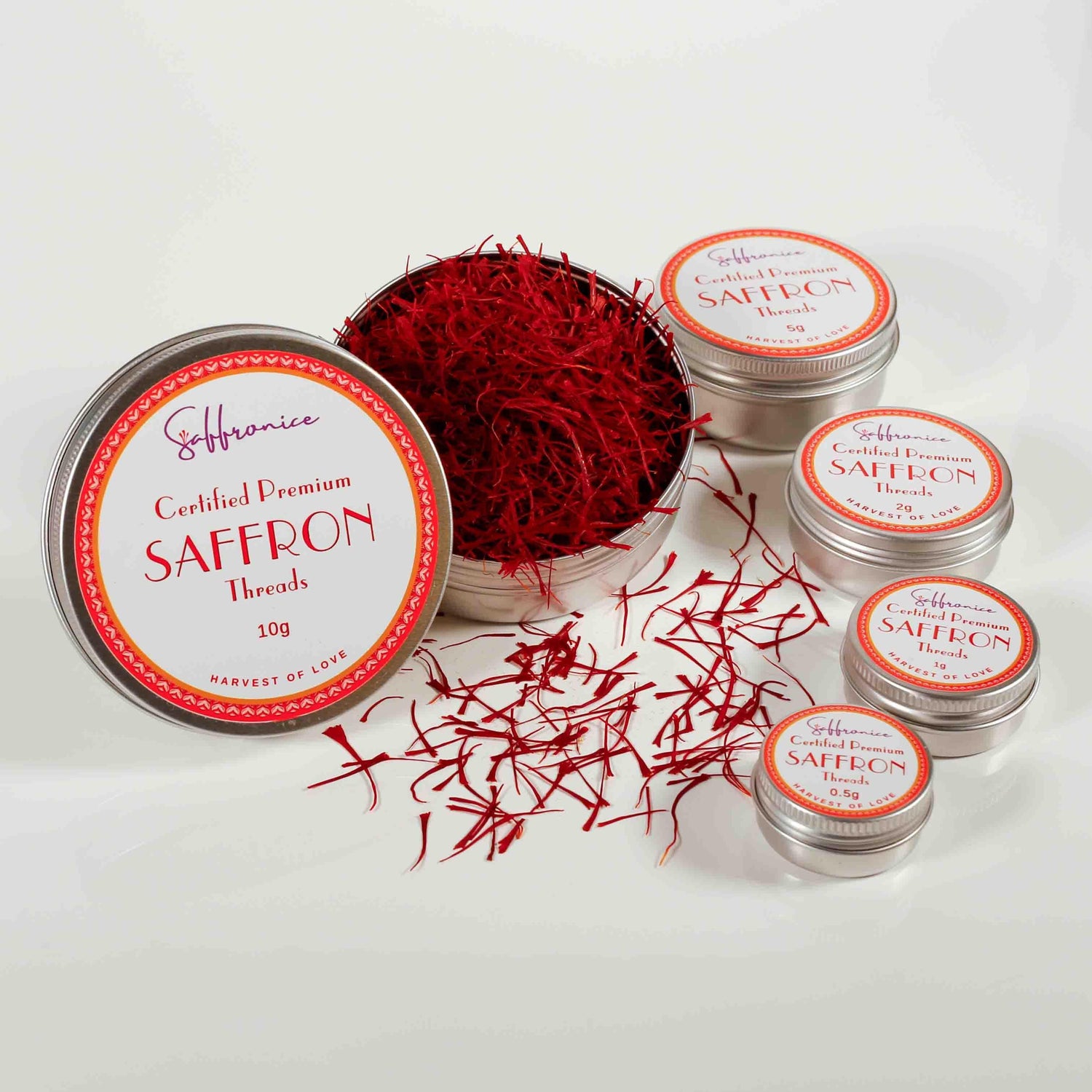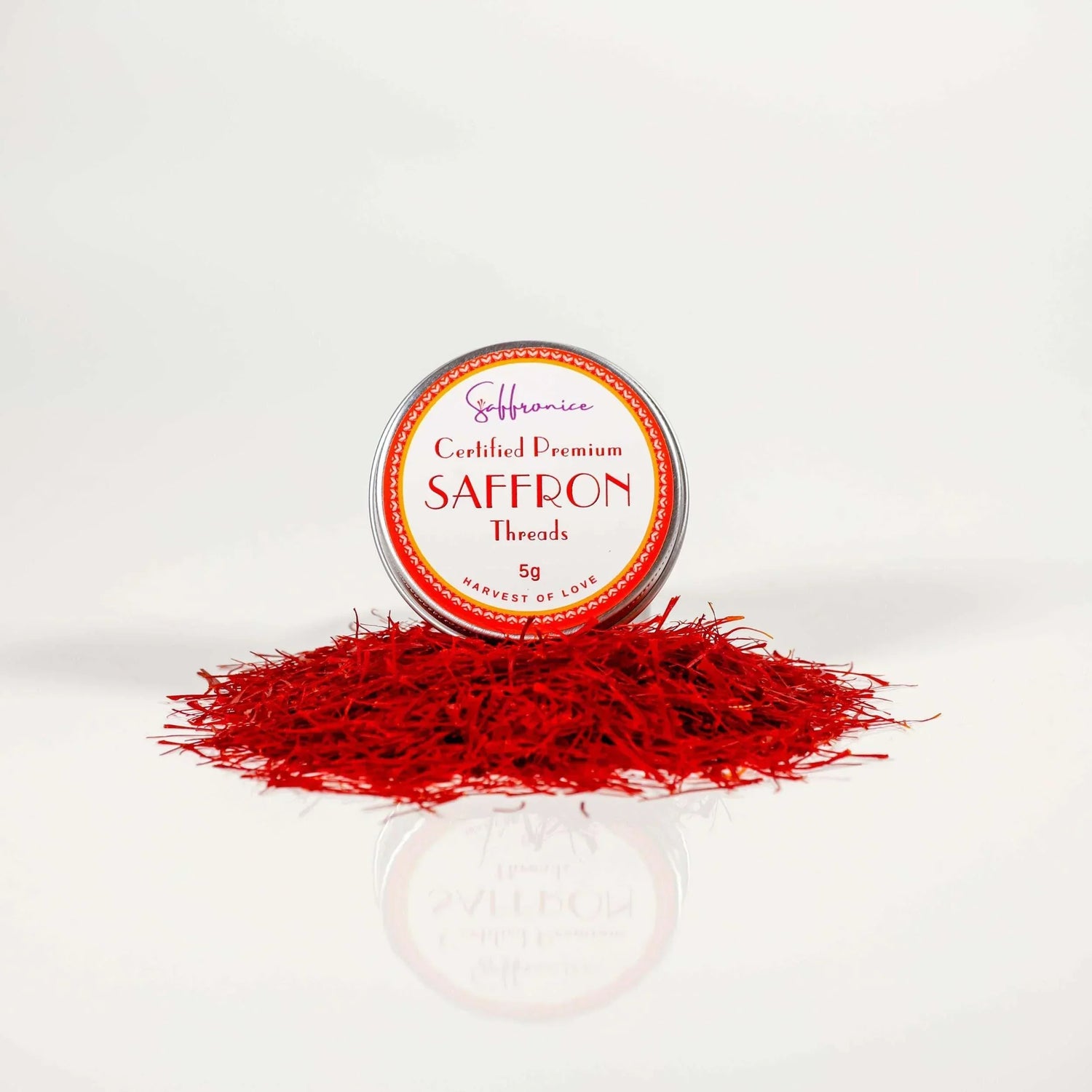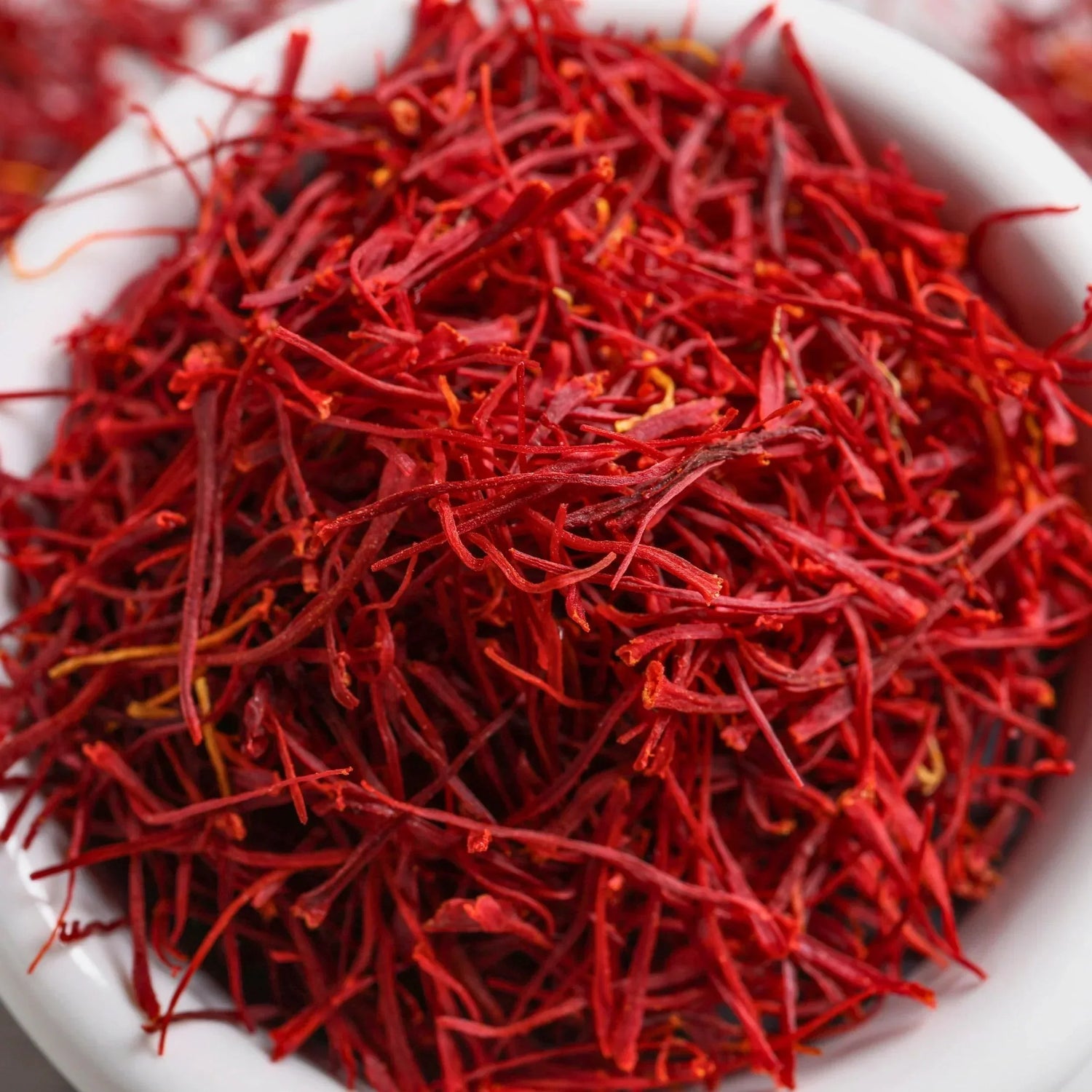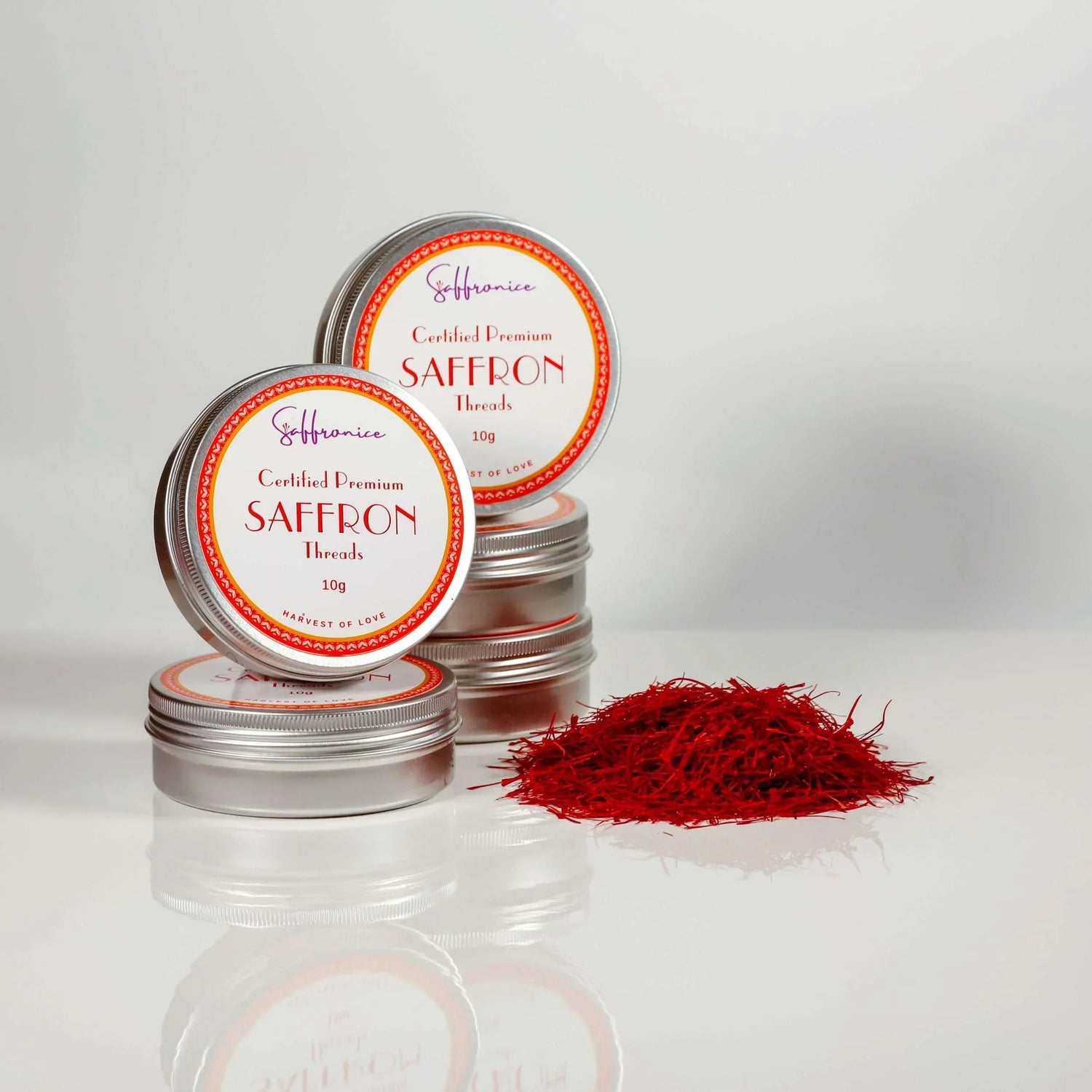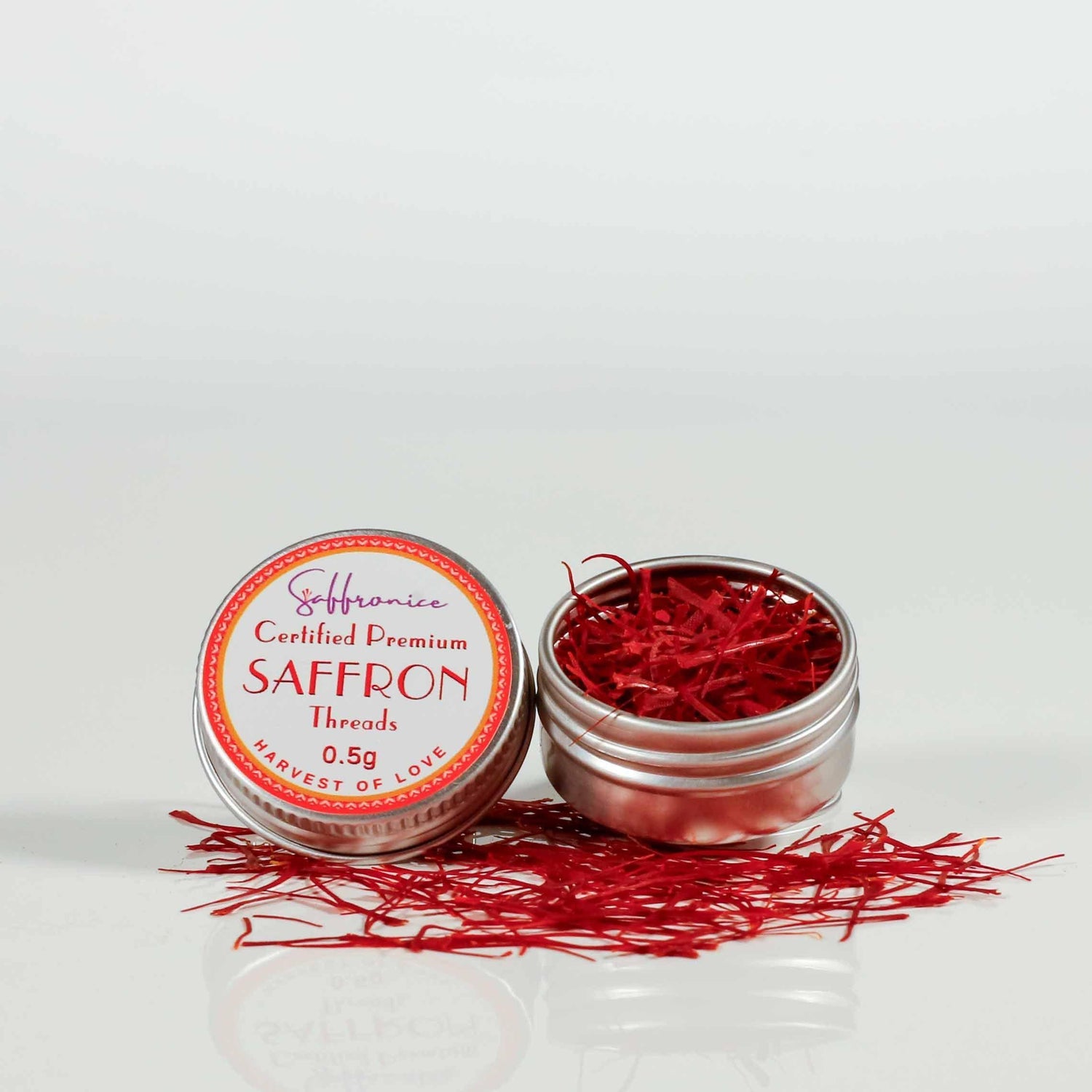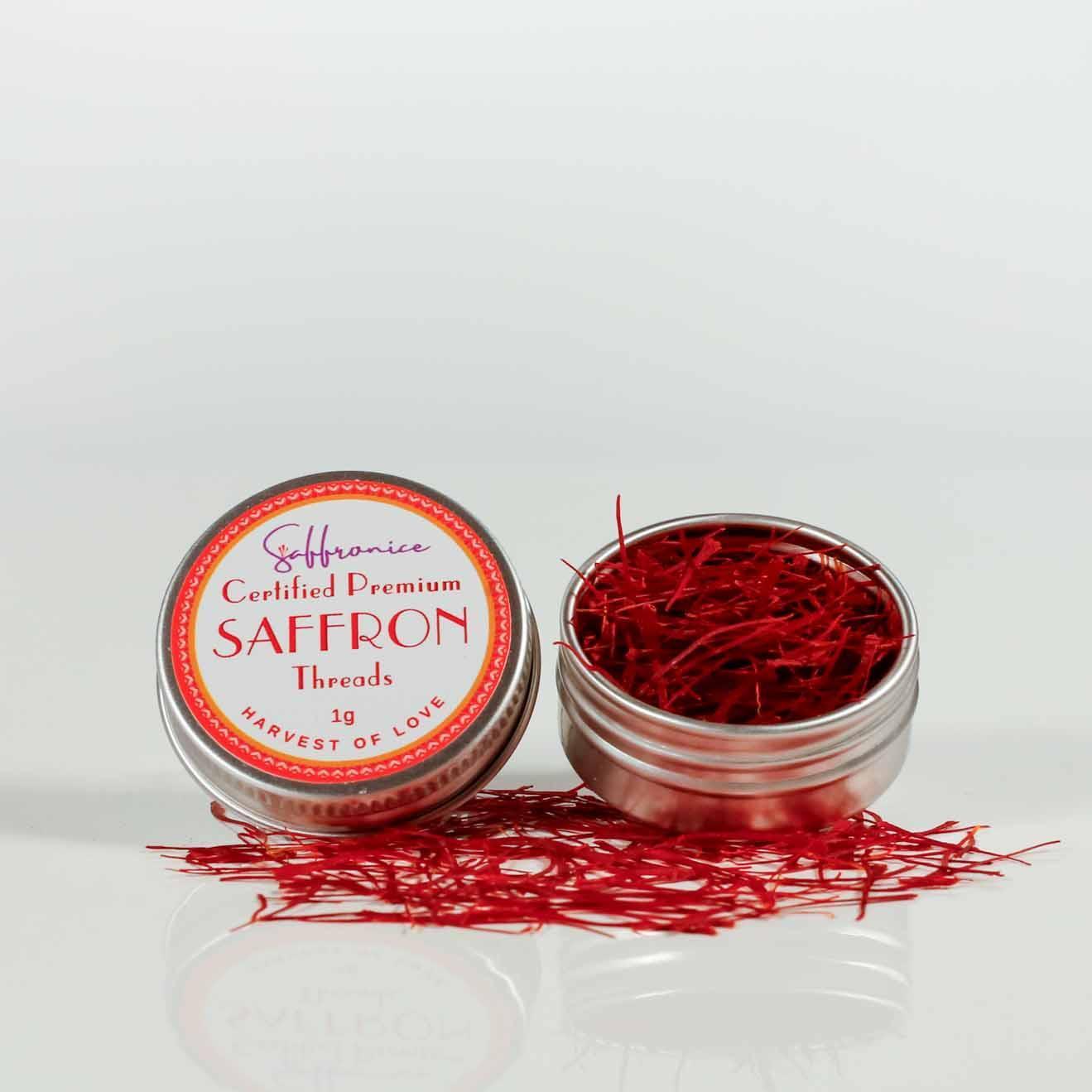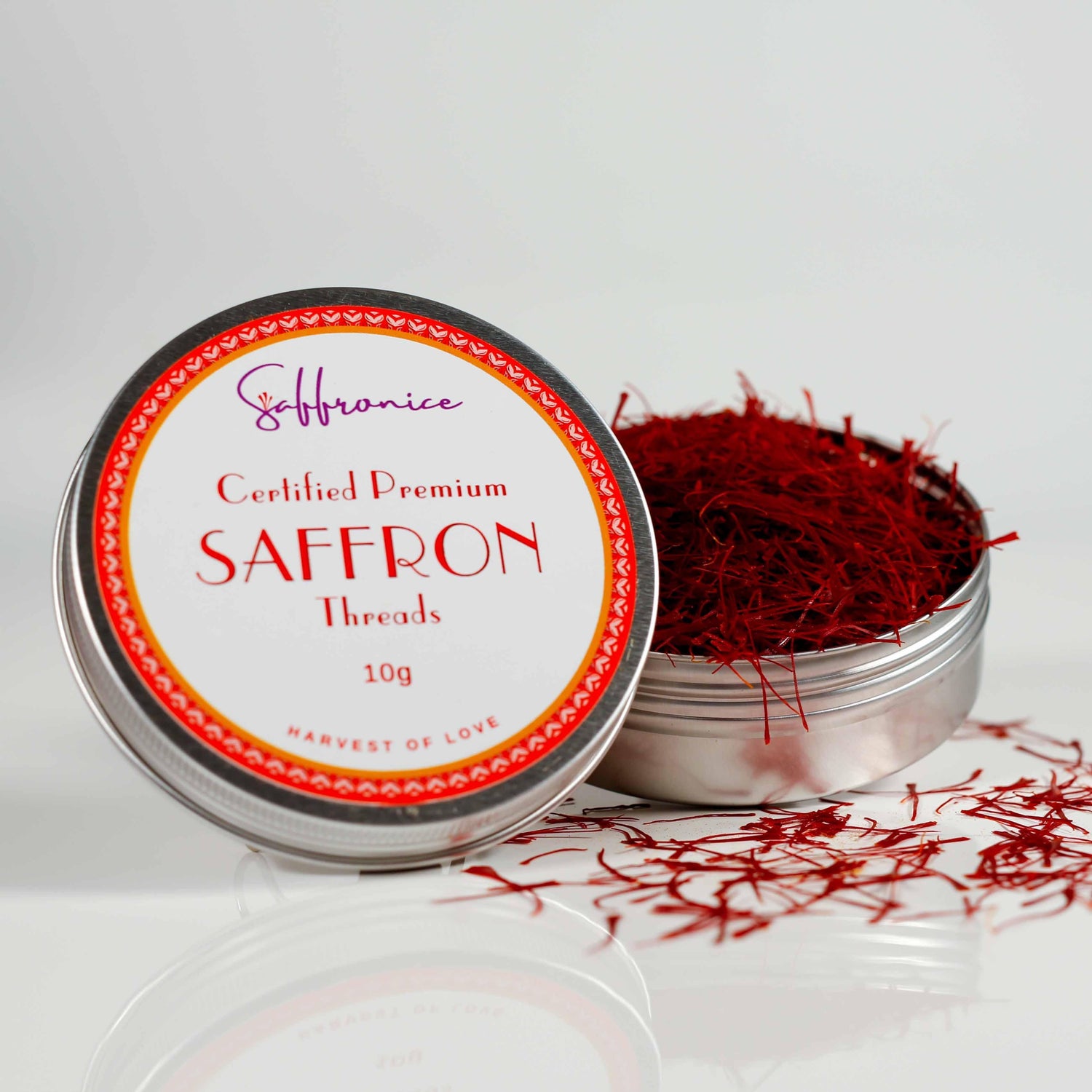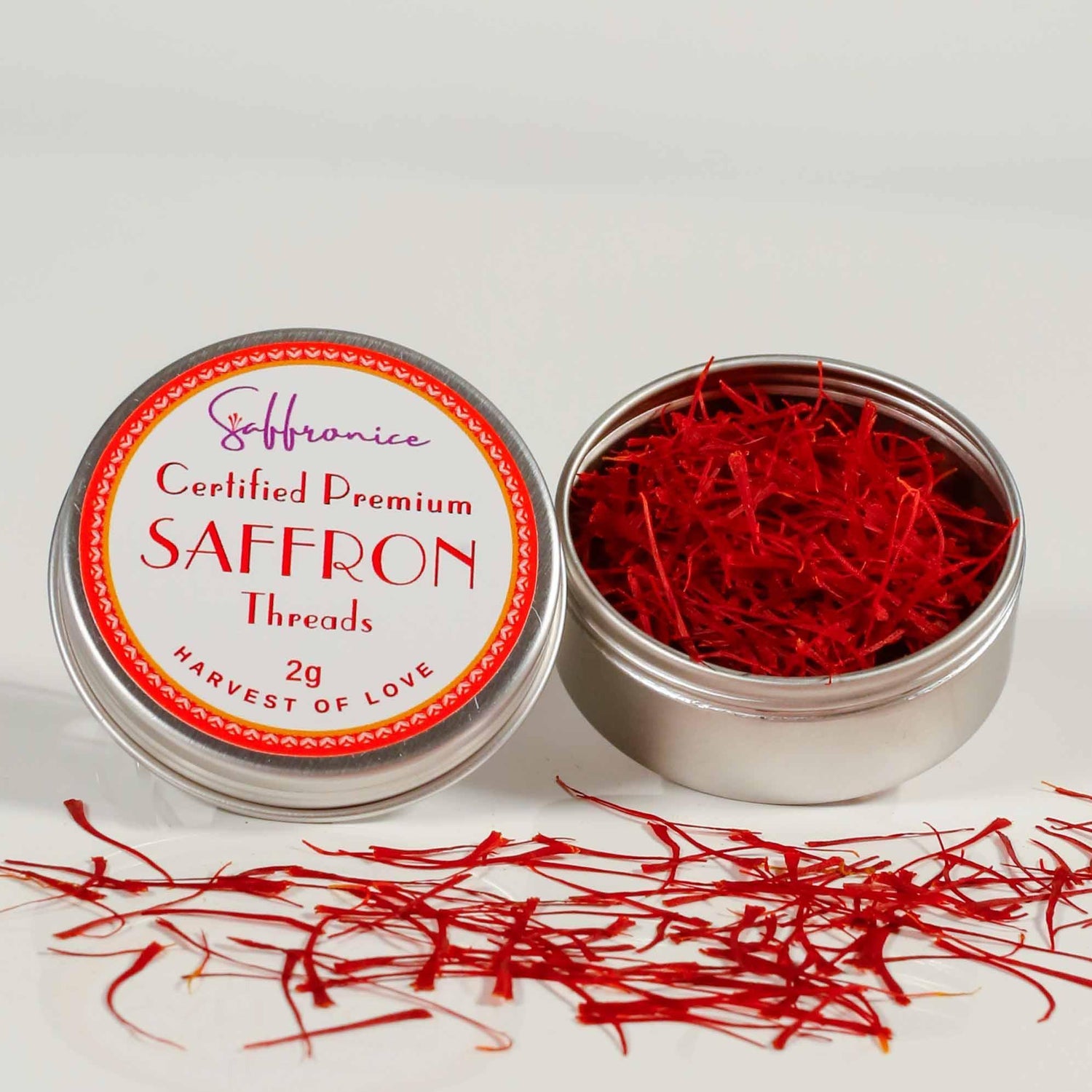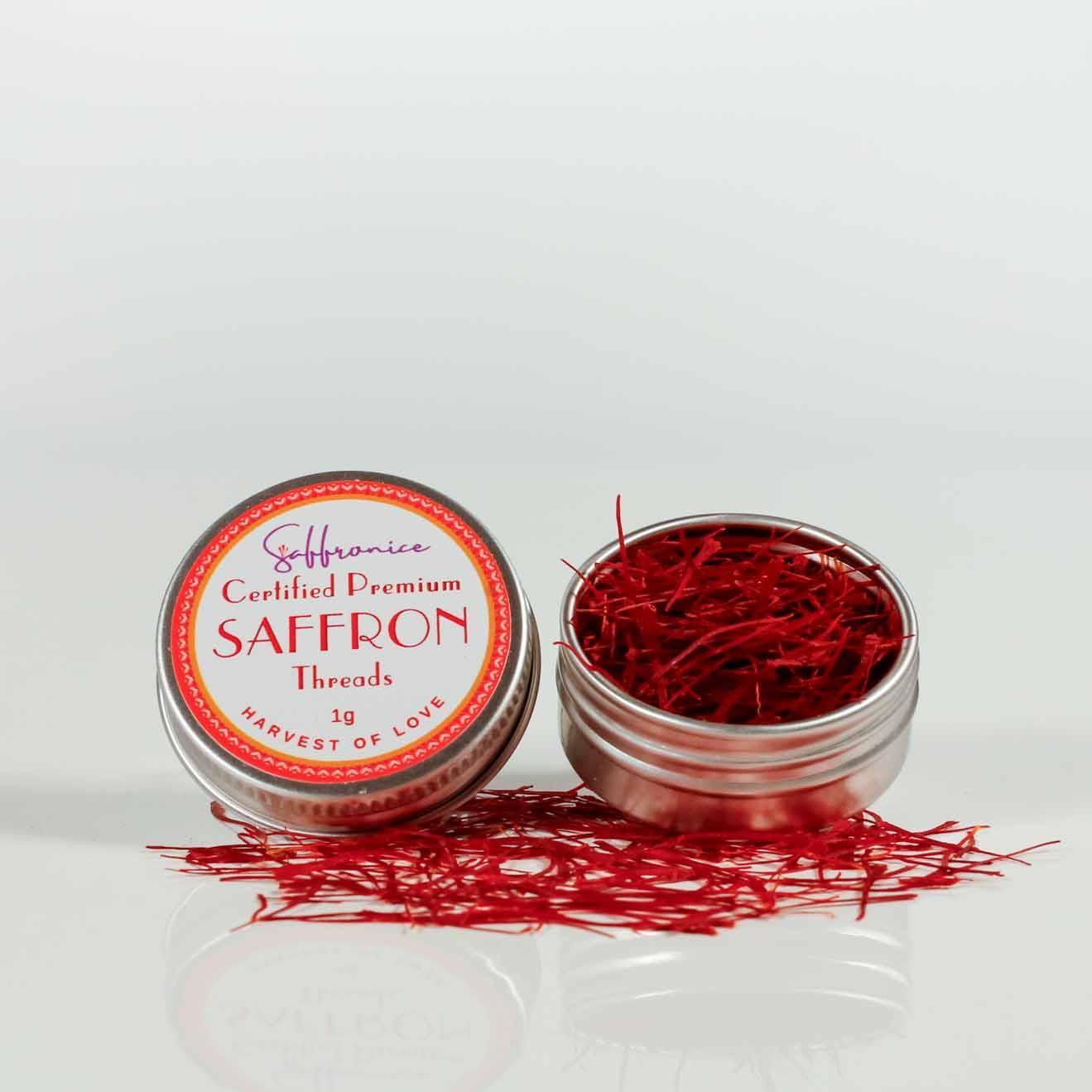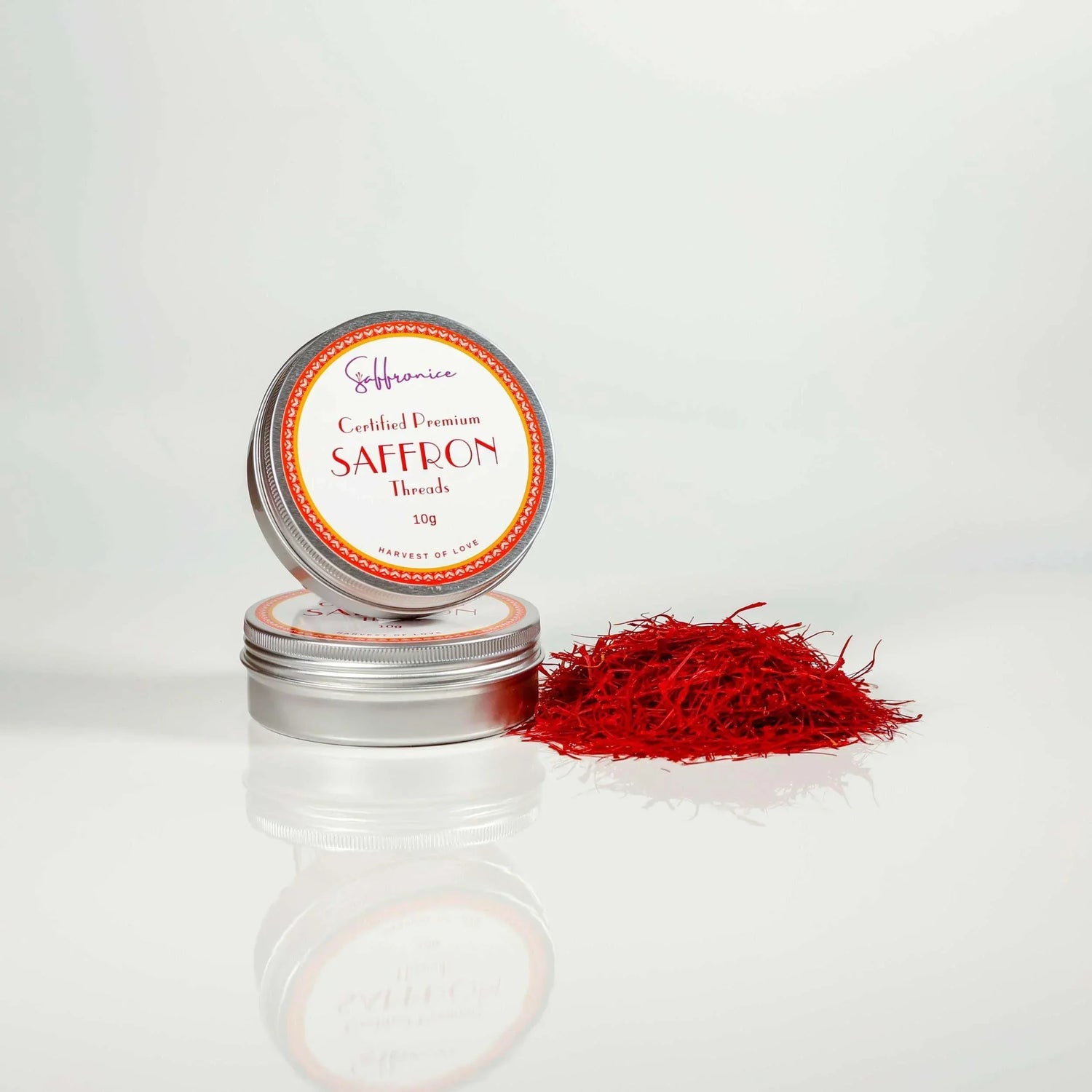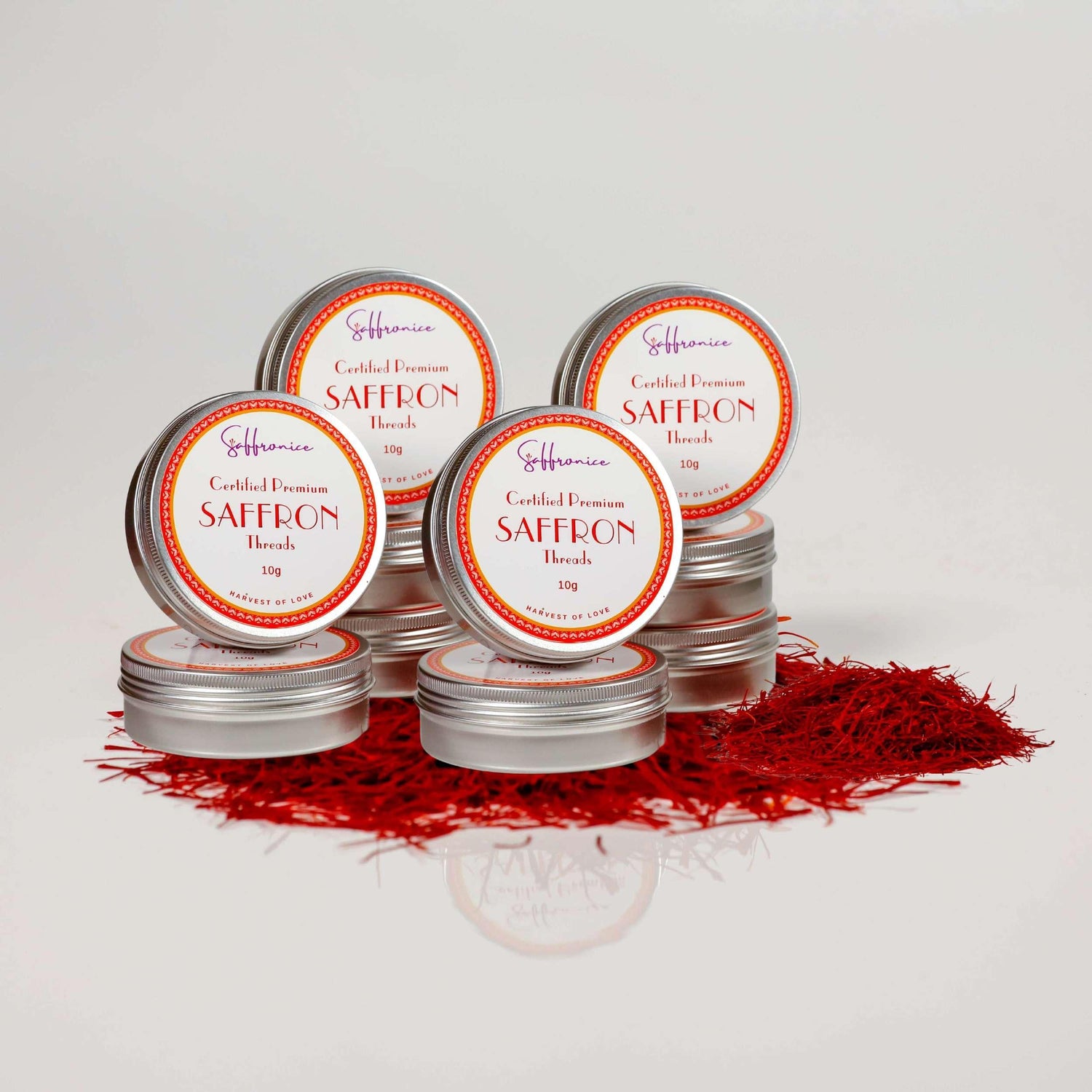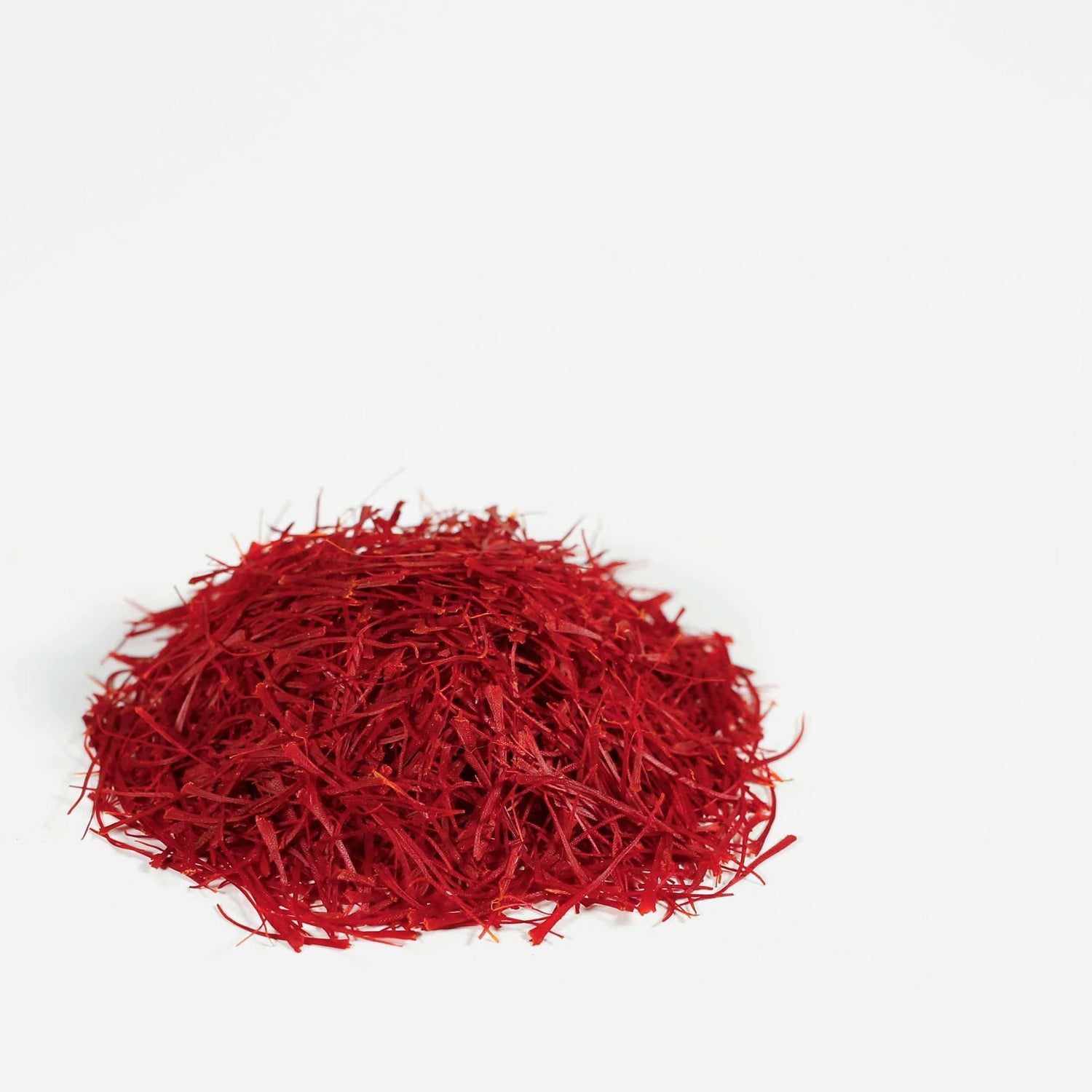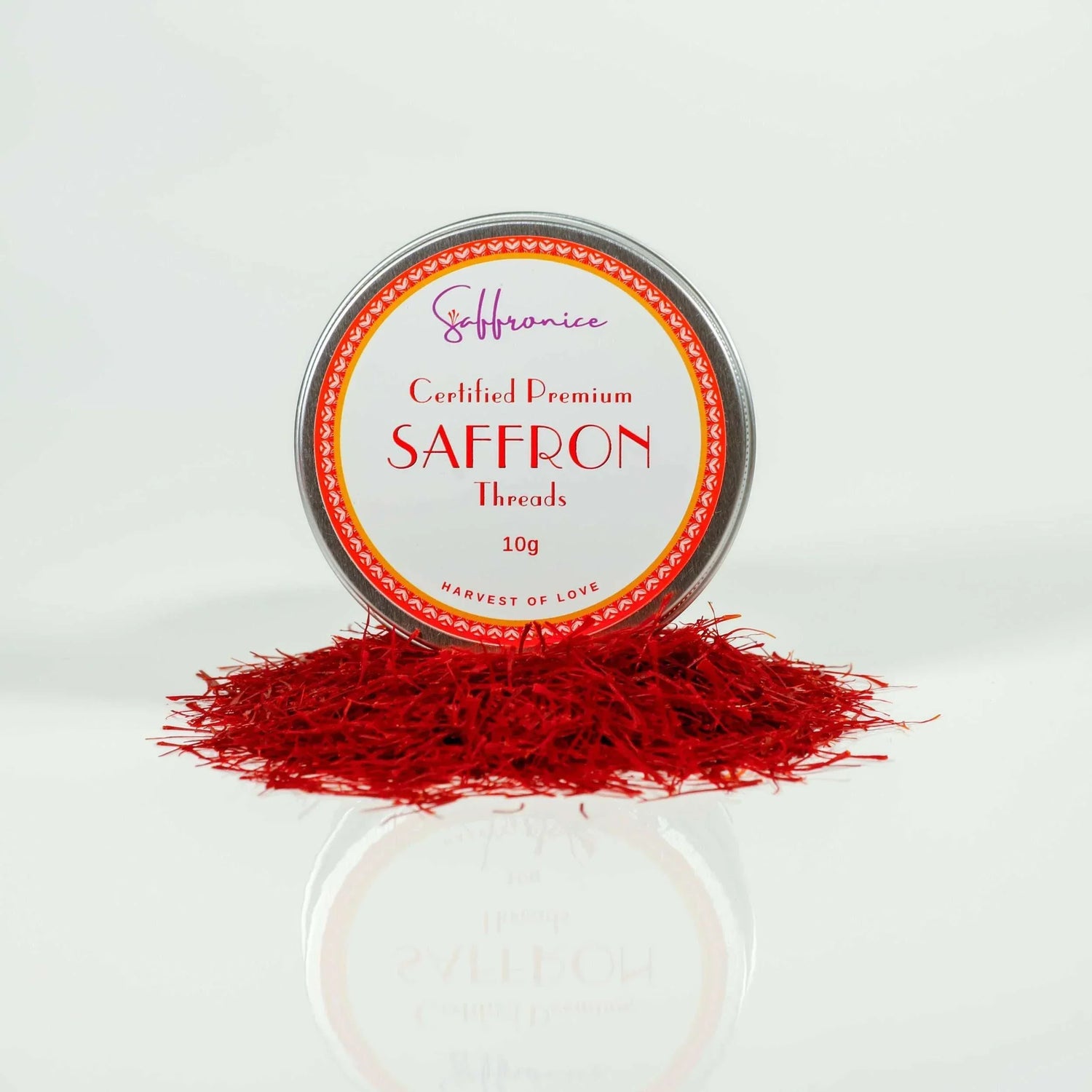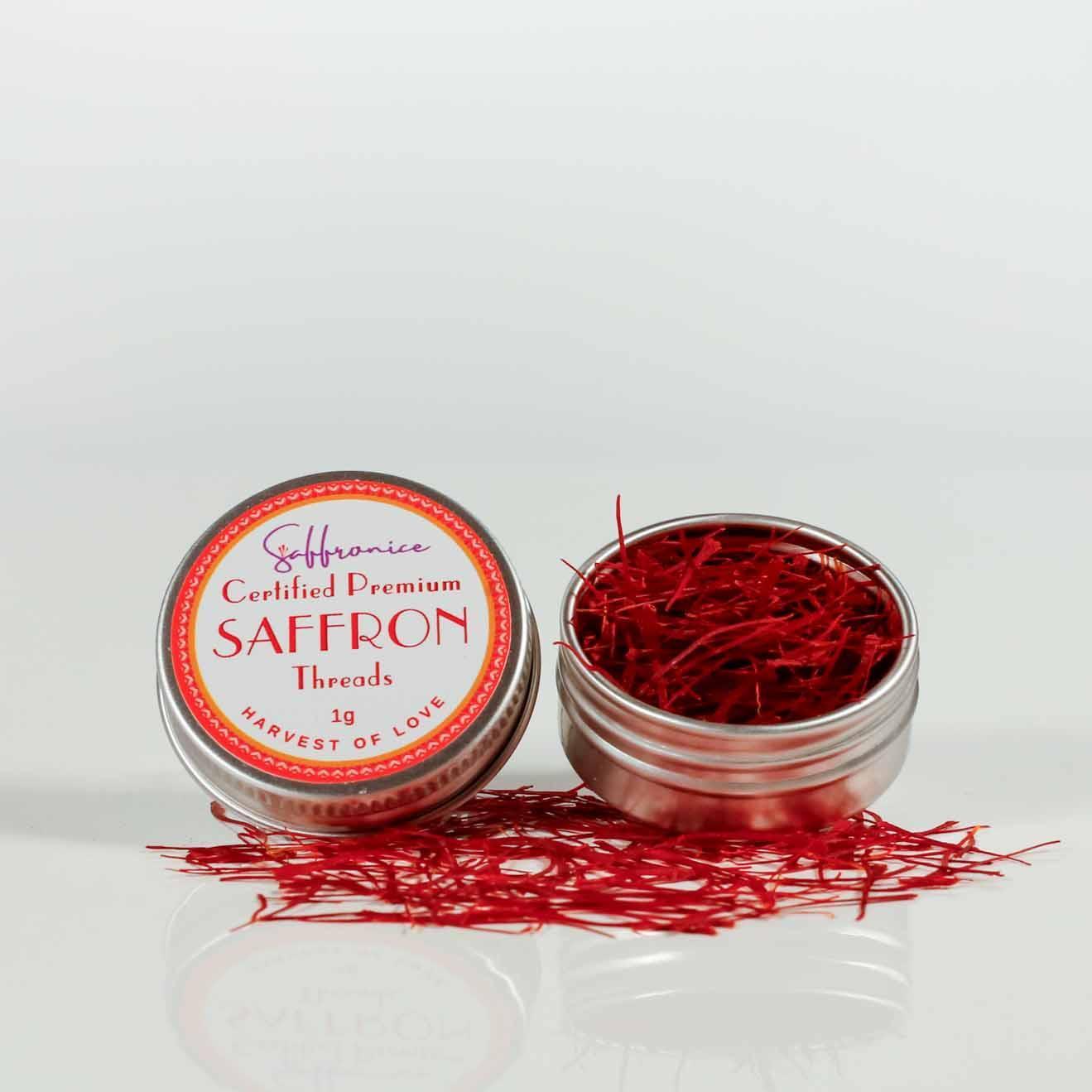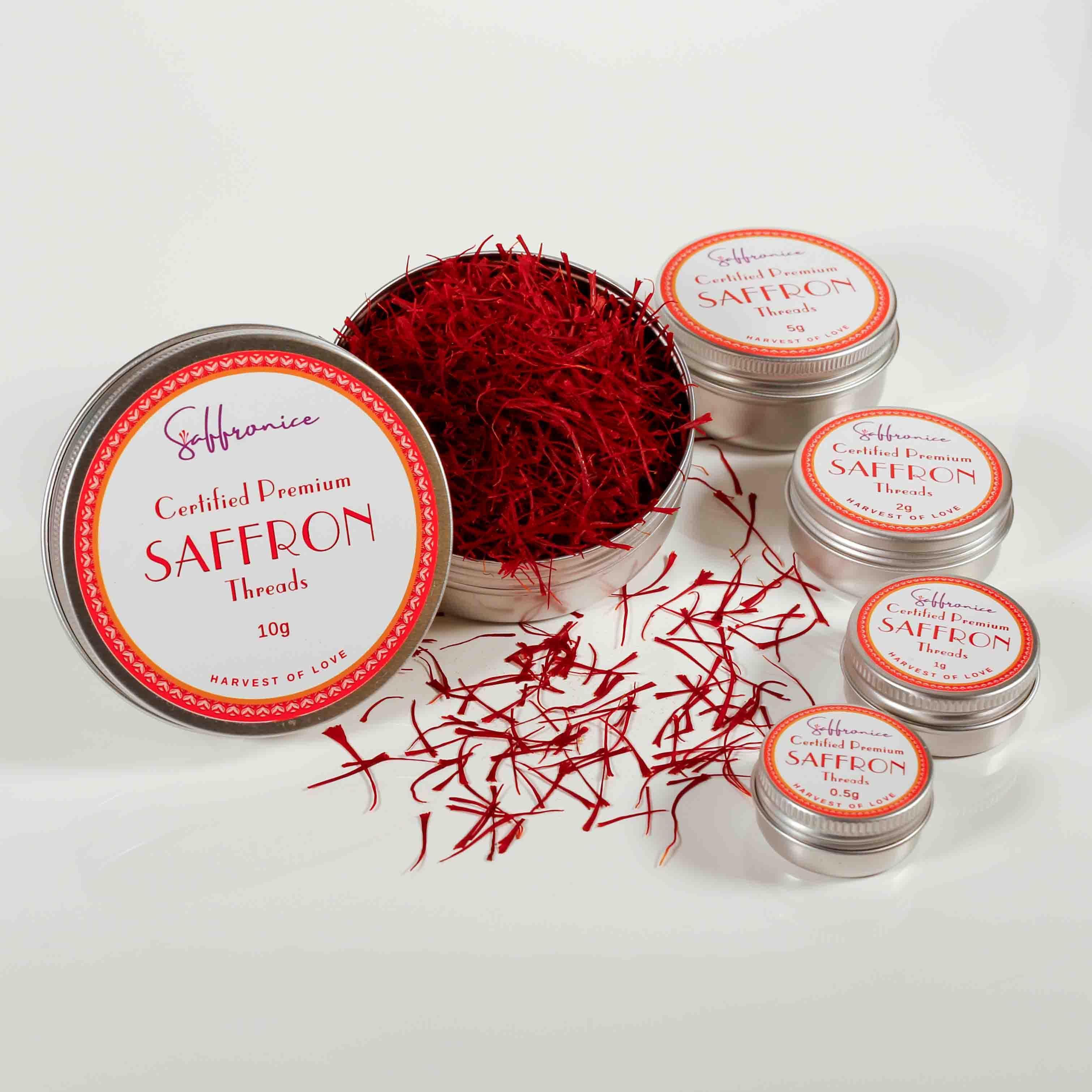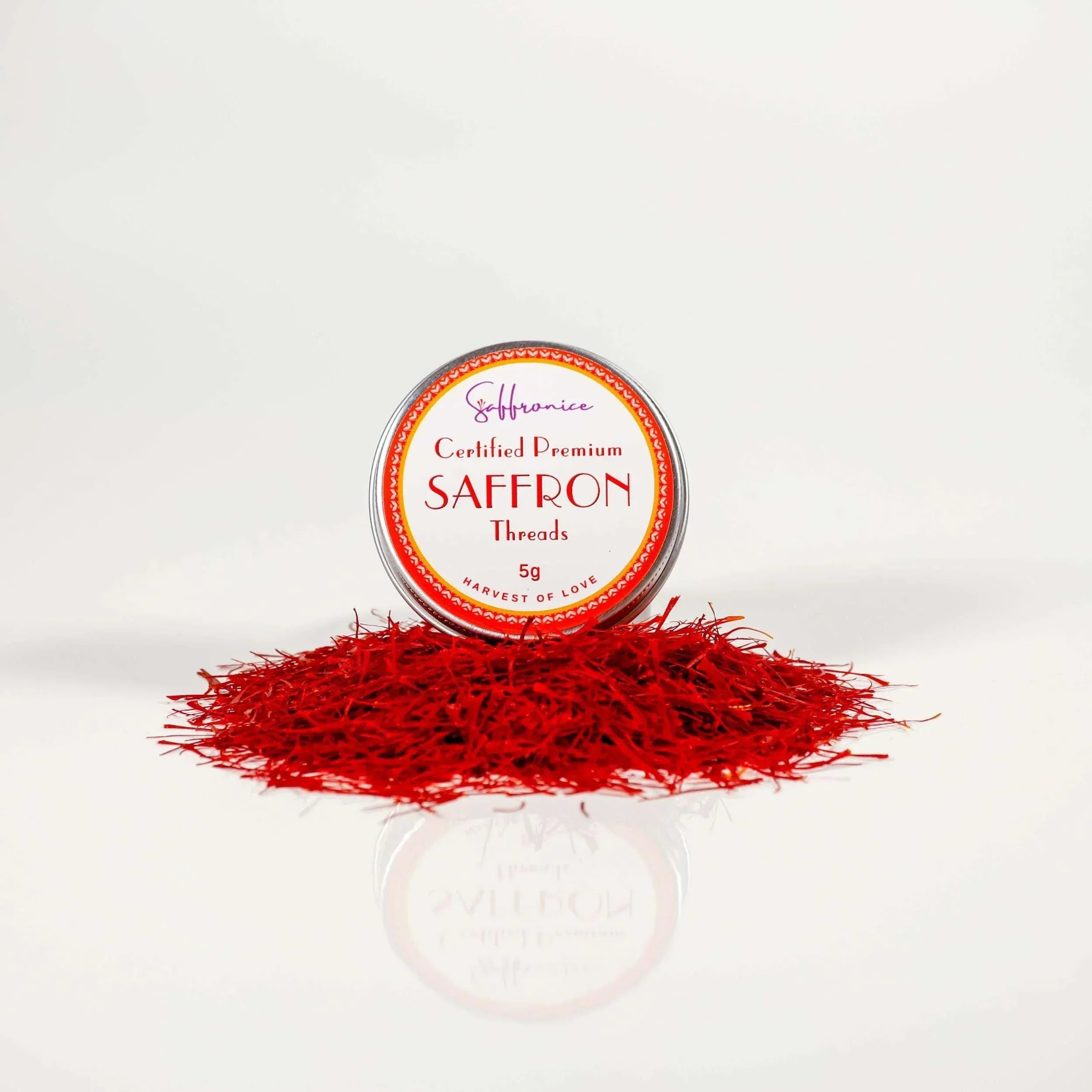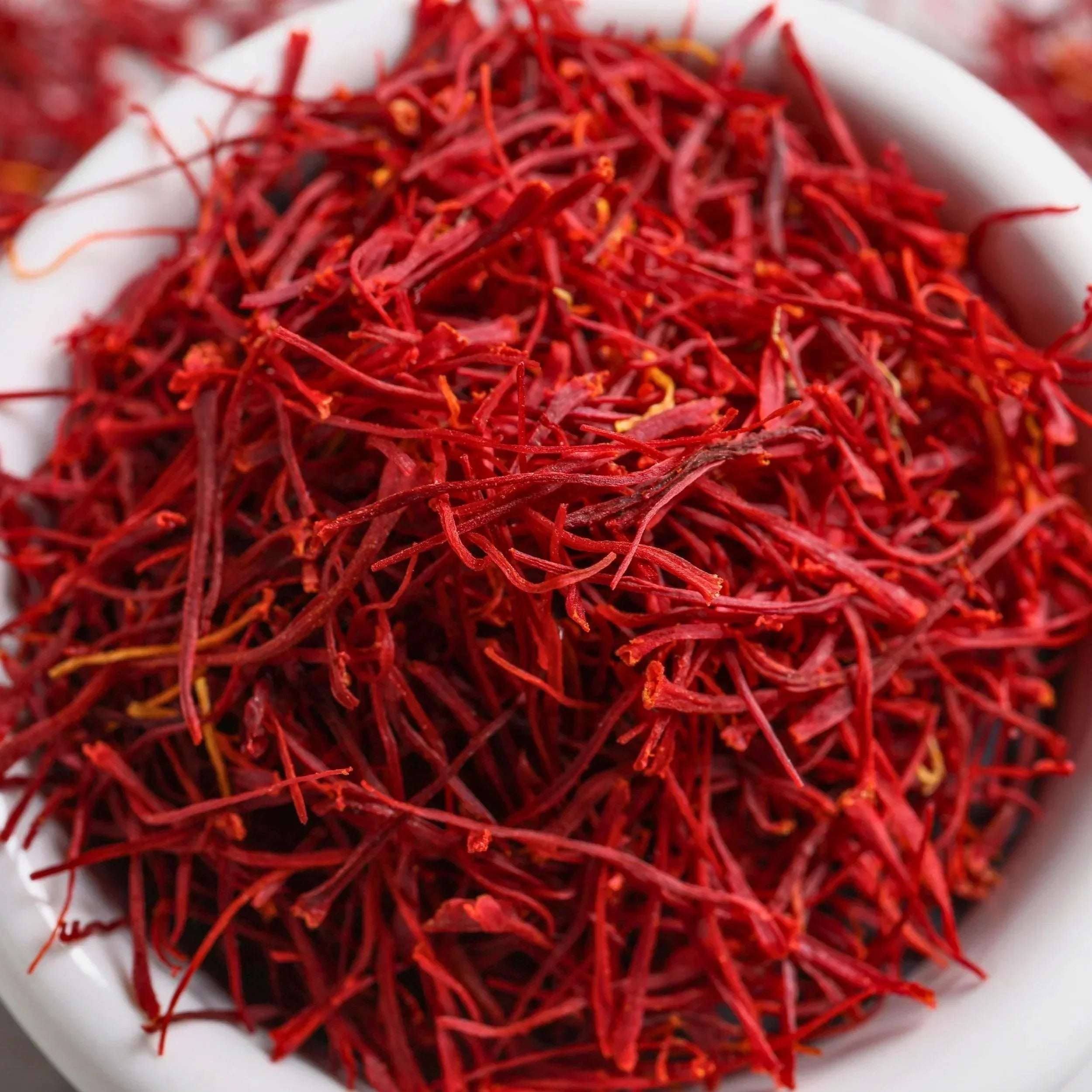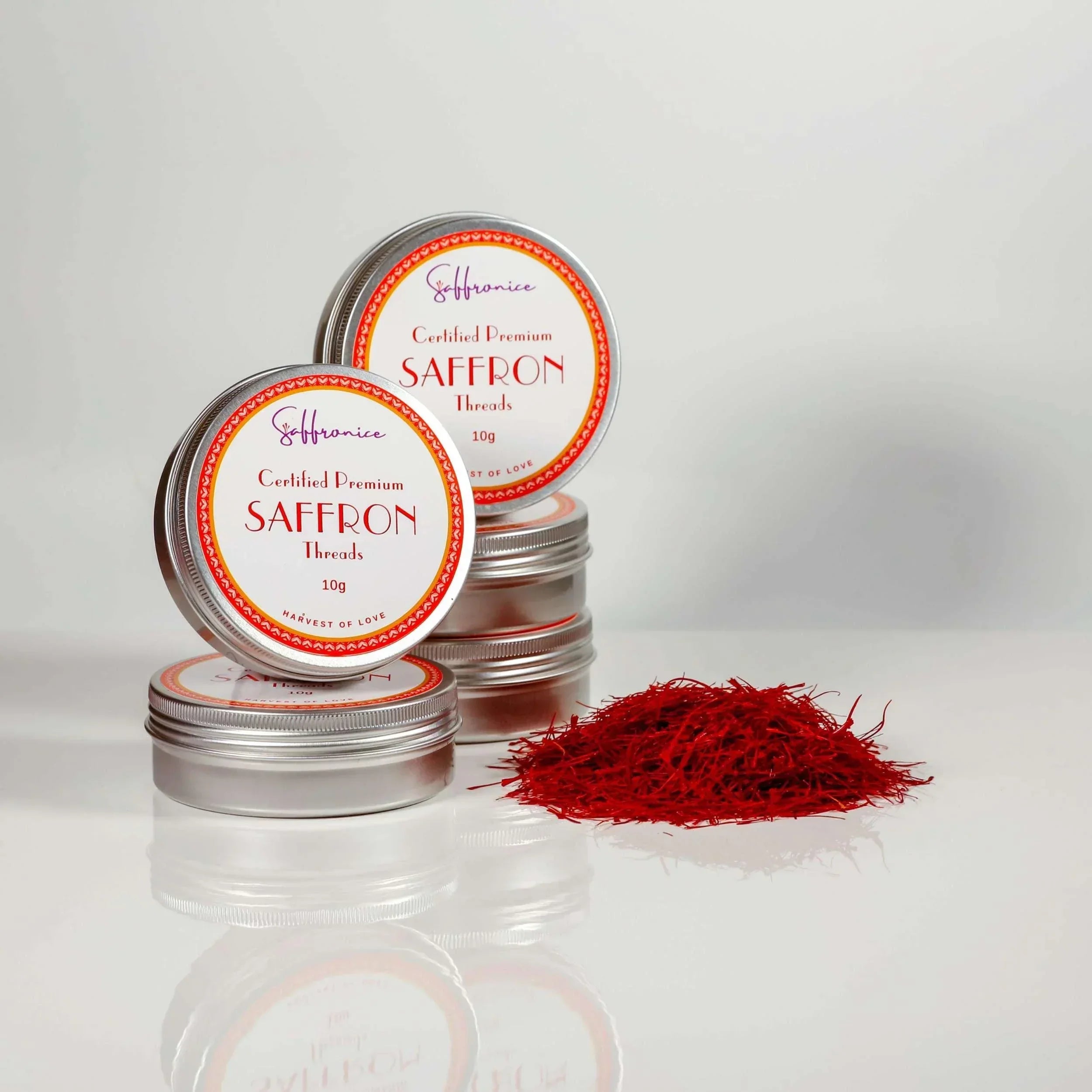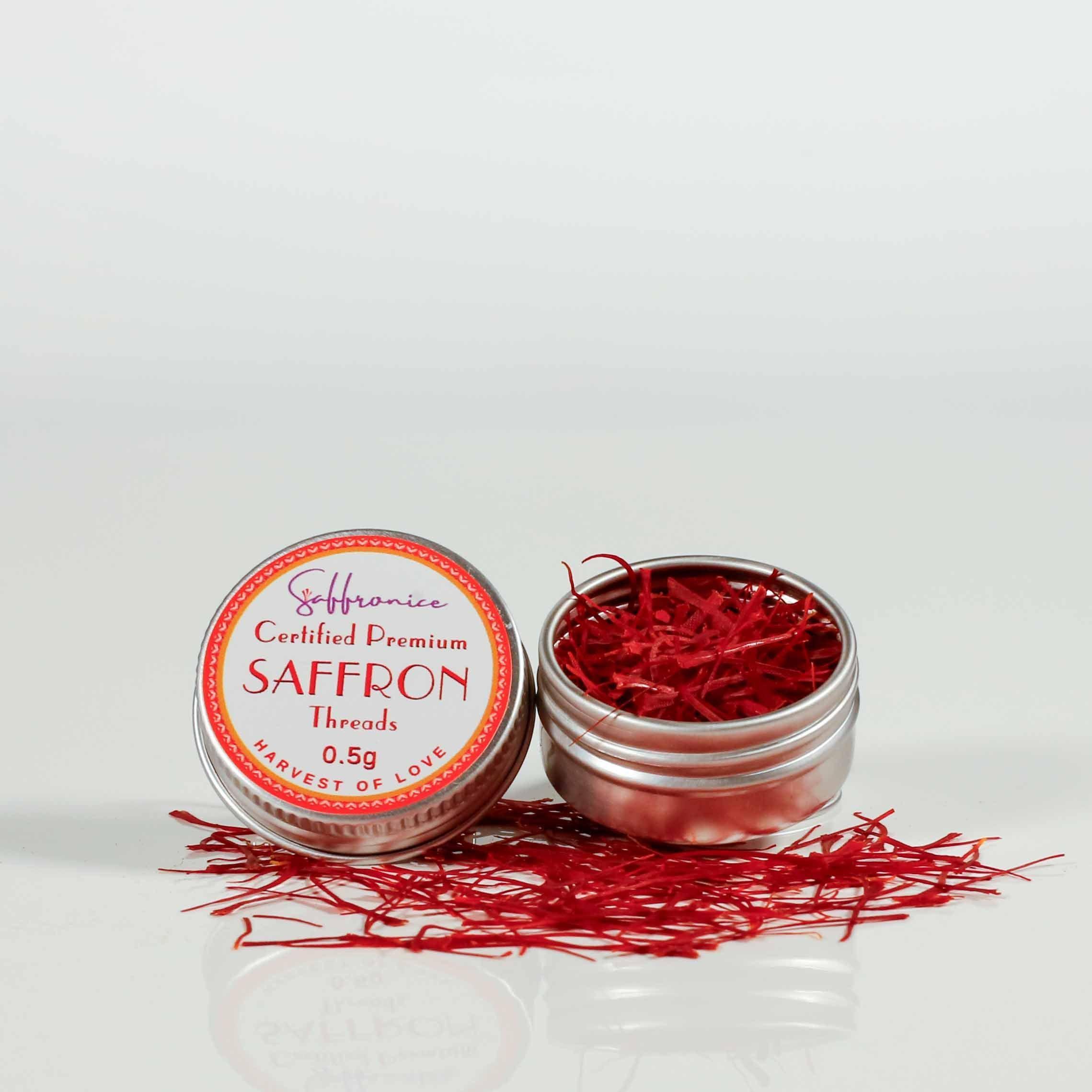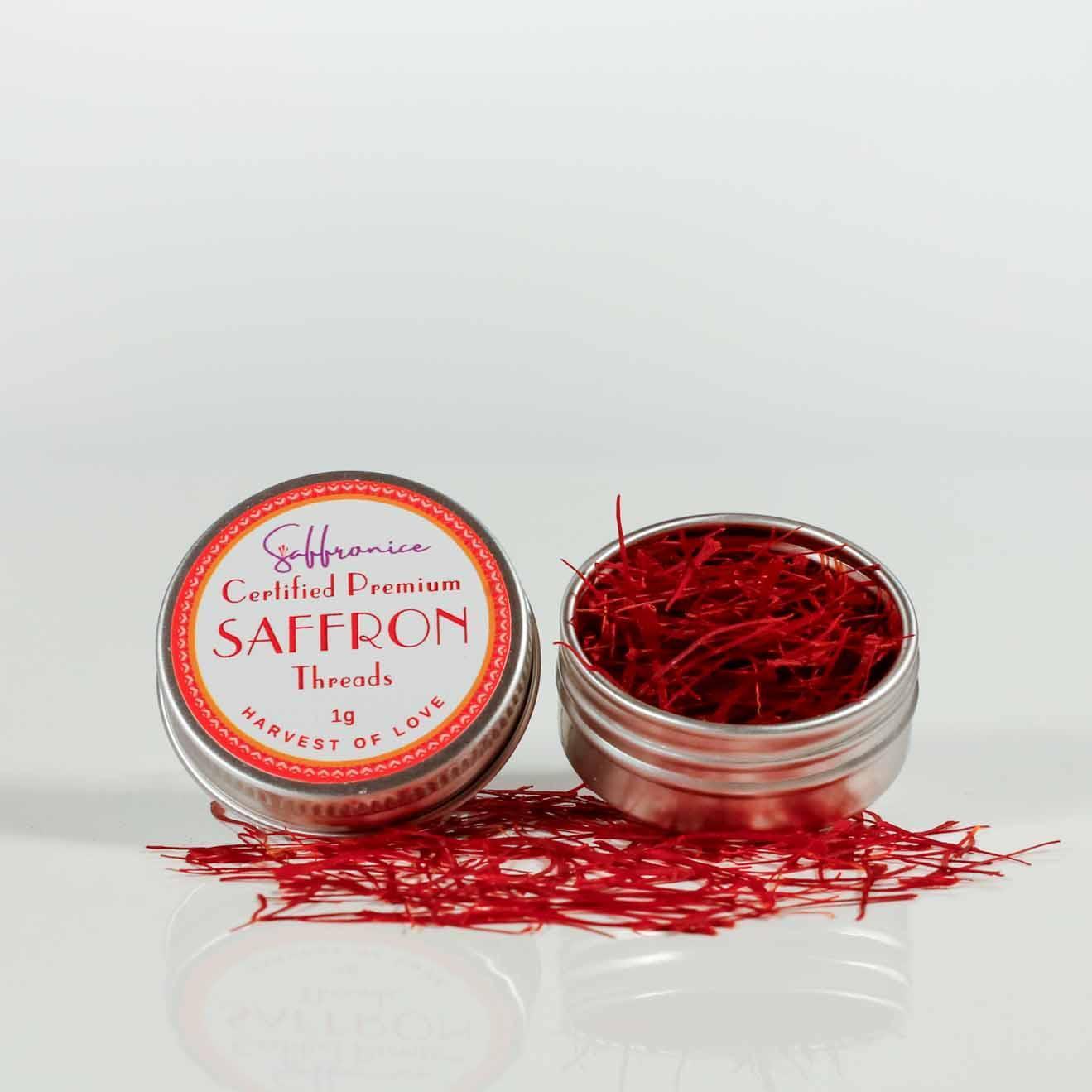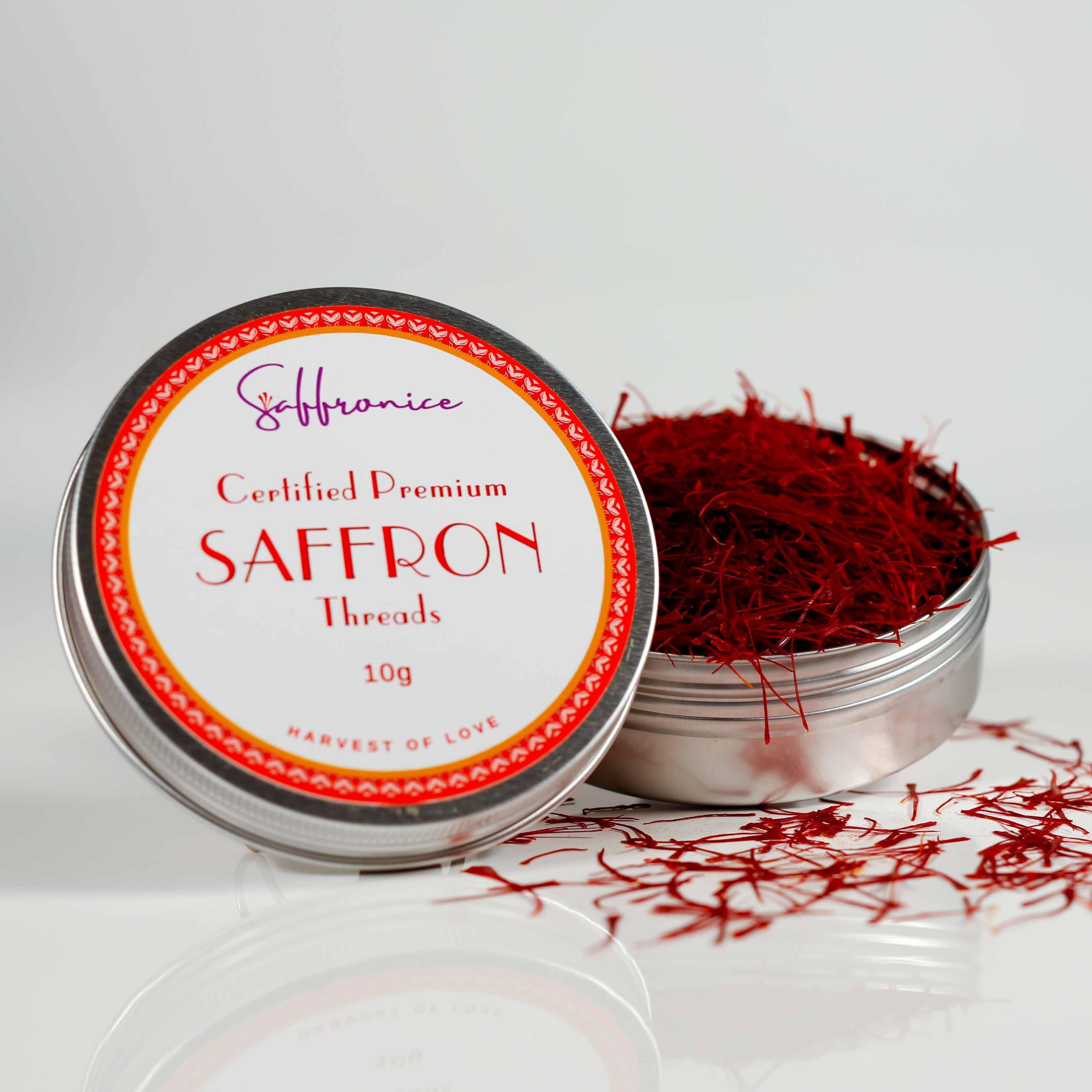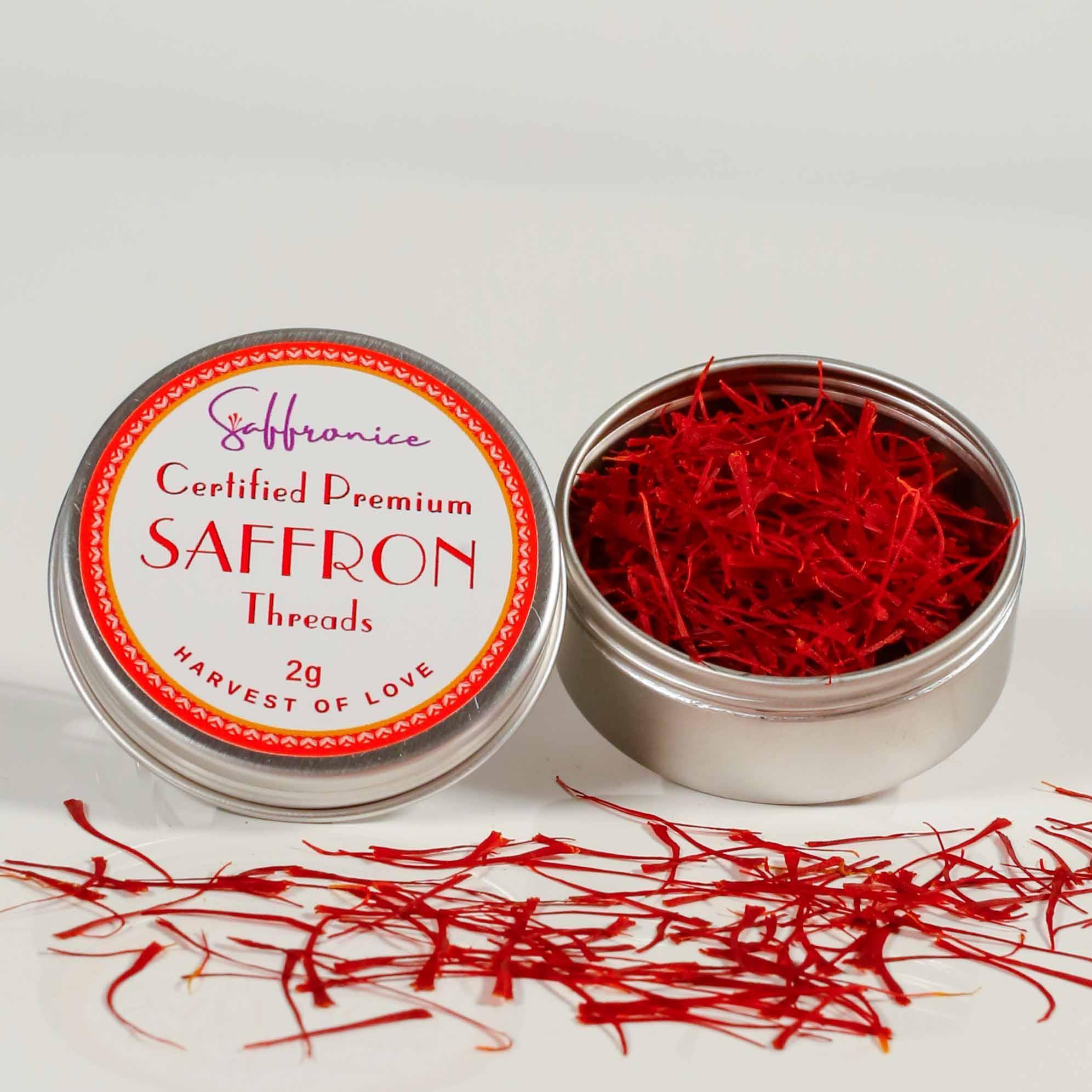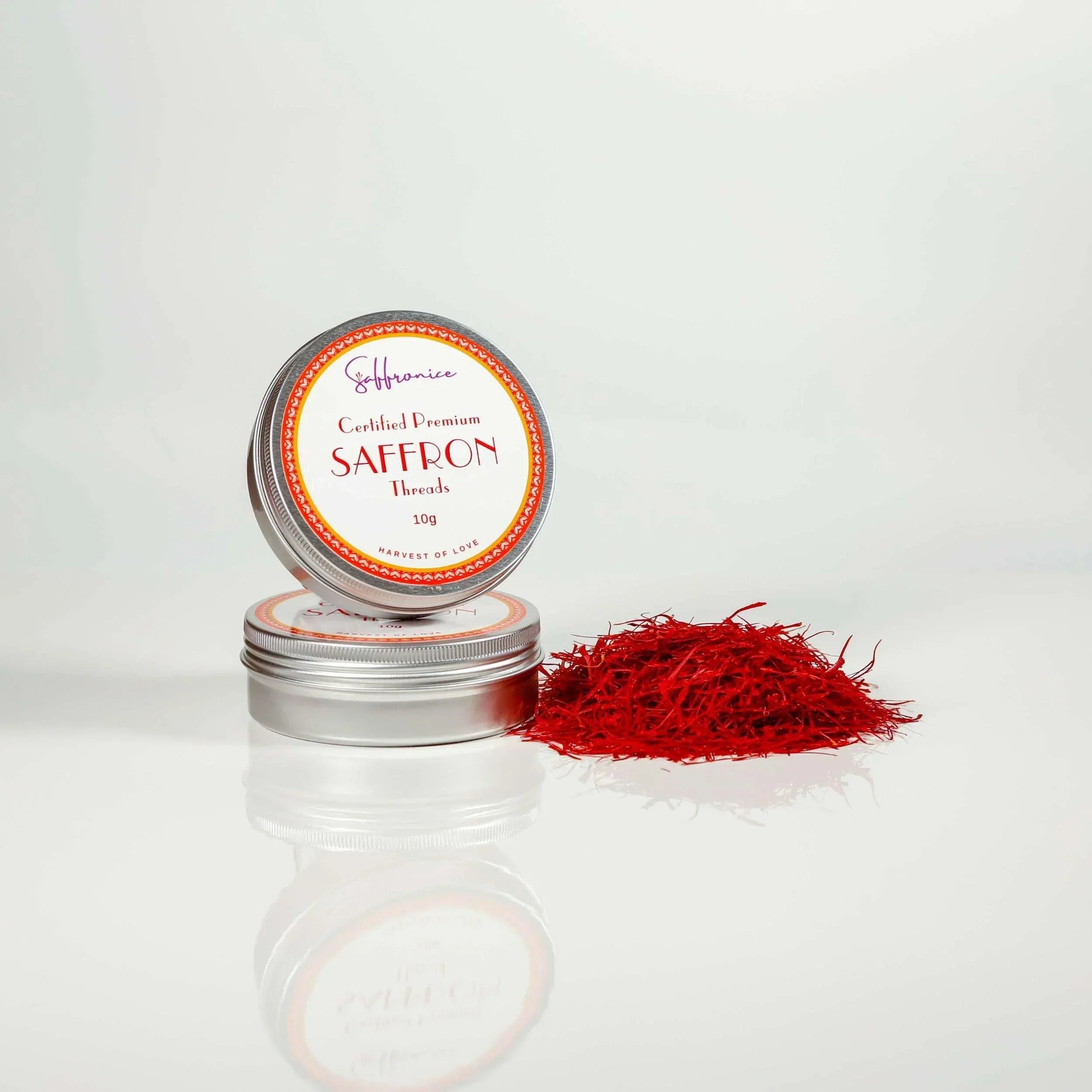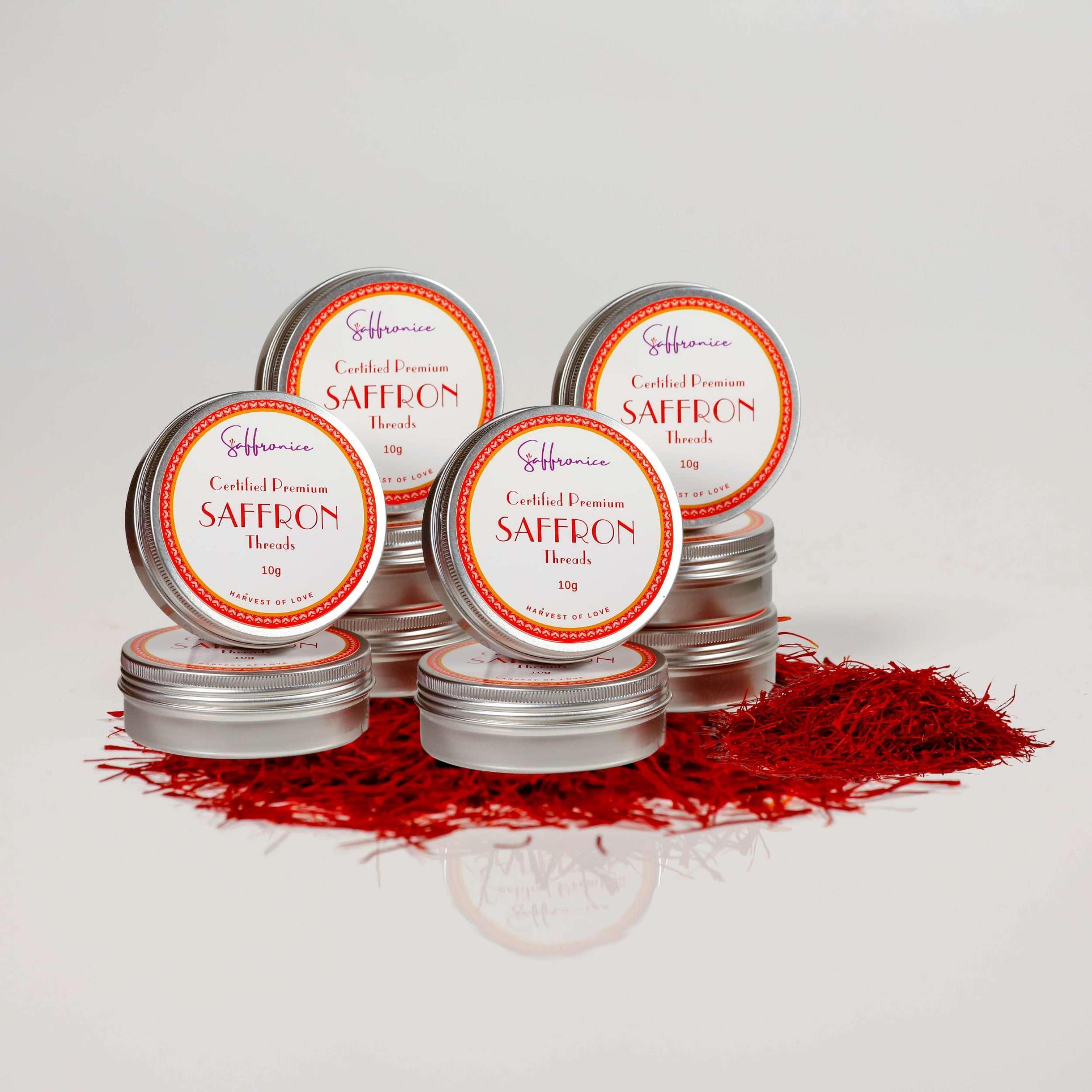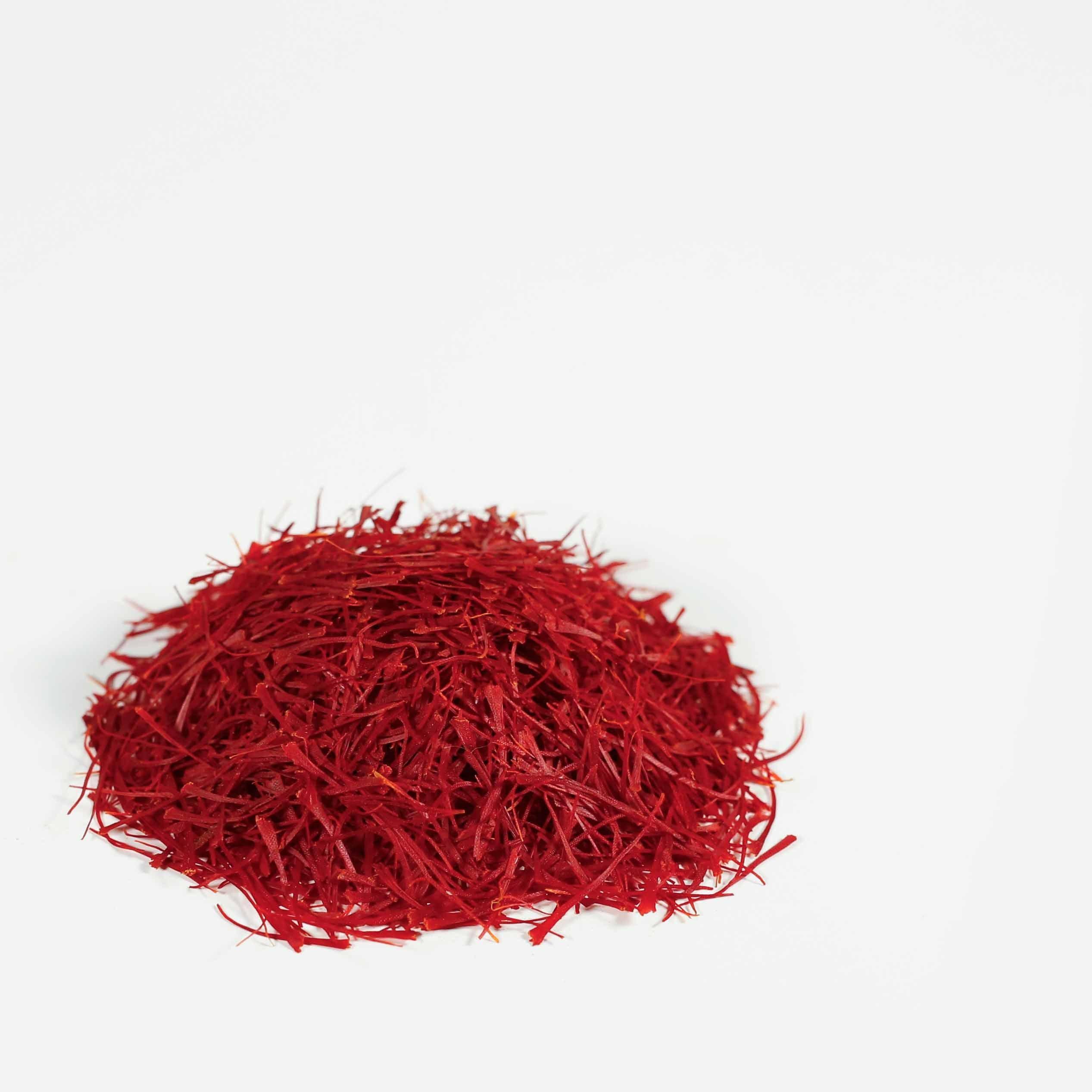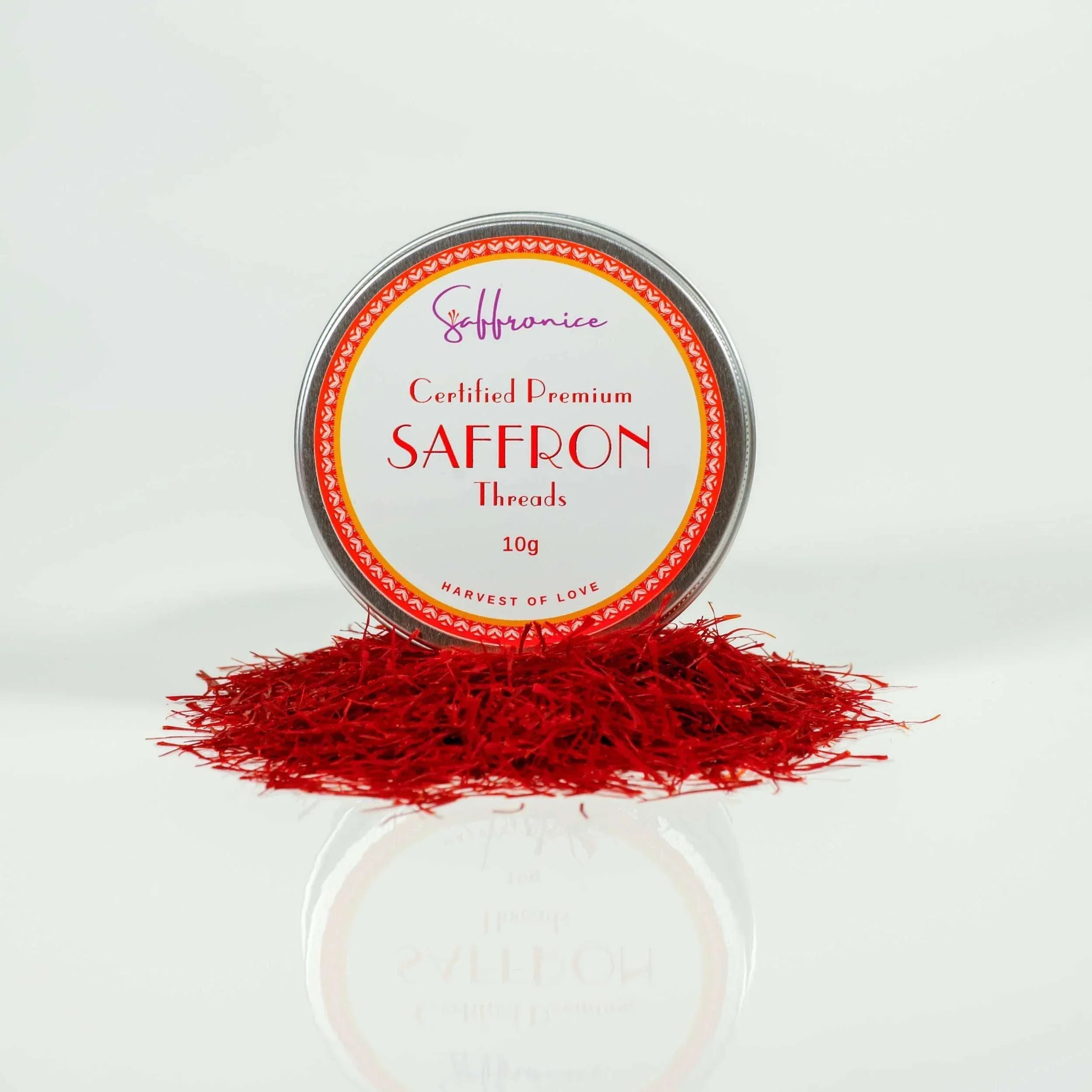Looking for the world's best saffron in 2025? After analysing 50+ brands through laboratory testing and evaluating over 1,000 customer reviews, we've identified the top 10 saffron varieties that deliver exceptional quality, purity, and value.
Whether you're seeking Iranian Super Negin, Kashmiri Mongra, or Spanish Coupe grade saffron, this comprehensive guide reveals which brands consistently exceed ISO 3632-2 standards for crocin (colour), safranal (aroma), and picrocrocin (flavour).
Quick Answer Box
Best Overall: Persian Super Negin Saffron (95%+ of global production)
Best Premium: Persian Saffron & Kashmir Mongra Saffron
Best Value: Spanish La Mancha & Iranian Saffron
Best for Beginners: Greek Krokos PDO Saffron
Most Sustainable: Organic Tasmanian & Australian Saffron

Comparison Table: Top 10 Saffron Varieties at a Glance
|
Country |
Grade |
Price/gram |
Crocin Level |
Safranal % |
Best For |
|---|---|---|---|---|---|
|
Iran |
Super Negin |
$8-15 |
280+ |
>50 |
Premium dishes, gifting, and Health Benefits |
|
Kashmir |
Mongra |
$15-25 |
240+ |
>45 |
Special occasions |
|
Spain |
Coupe |
$10-20 |
200+ |
>40 |
Paella, everyday use |
|
Greece |
Krokos PDO |
$12-18 |
220+ |
>45 |
Mediterranean cuisine |
|
Afghanistan |
Negin |
$7-12 |
180+ |
>35 |
Budget premium option |
|
Morocco |
Taliouine |
$9-16 |
190+ |
>38 |
Tagines, North African |
|
Italy |
Abruzzo DOP |
$14-22 |
210+ |
>42 |
Risotto, Italian dishes |
|
Tasmania |
Organic |
$20-30 |
200+ |
>40 |
Luxury organic option |
|
Azerbaijan |
Traditional |
$8-14 |
185+ |
>36 |
Eastern European dishes |
|
France |
Quercy |
$18-28 |
195+ |
>38 |
French cuisine, boutique |
2025 Market Update: What's Changed
The saffron industry has experienced significant shifts in 2025:
-
Iran's dominance grows: Now producing 95%+ of global supply (up from 90%)
-
Climate impact: 2024's extreme weather reduced Spanish production to under 500kg
-
Price surge: Premium grades increased 15-20% due to supply constraints
-
Authentication tech: Blockchain tracking now available from major suppliers
-
Sustainability focus: Organic certification becoming standard for premium brands
How We Ranked: 8 Scientific Criteria
Our ranking methodology combines laboratory analysis with real-world testing:
1. Aroma Intensity (Safranal Content)
The distinctive honey-hay aroma comes from safranal, comprising up to 70% of saffron's fragrance. We measure this using gas chromatography, looking for levels above 20mg/kg (ISO minimum) with premium grades exceeding 50mg/kg.
2. Colour Strength (Crocin Levels)
Crocin determines saffron's golden-yellow dye power. Using spectrophotometry at 440nm wavelength, we verify samples exceed the ISO 3632-2 minimum of 190, with top grades reaching 250+.
3. Flavour Profile (Picrocrocin)
This glucoside creates saffron's characteristic bitter-sweet taste. Lab tests measure picrocrocin levels, with quality saffron showing 70+ on the scale (ISO minimum: 70).
4. Geographic Origin & Terroir
Like wine, saffron's origin matters. We verify authenticity through:
-
Isotope analysis for geographic markers
-
DNA testing for Crocus sativus verification
-
Soil mineral composition matching
5. Purity Testing
Zero tolerance for adulterants. We screen for:
-
Added dyes (tartrazine, sunset yellow)
-
Plant substitutes (safflower, marigold)
-
Thread coating substances
-
Style-to-stigma ratio (should be 0%)
6. Moisture Content
Premium saffron maintains 8-12% moisture. Too dry = brittle threads; too moist = mold risk. We use Karl Fischer titration for precise measurement.
7. Microbiological Safety
Testing includes:
-
Total plate count (<10^5 CFU/g)
-
E. coli (absent in 1g)
-
Salmonella (absent in 25g)
-
Aflatoxin levels (<5 μg/kg)
8. Thread Morphology
Visual inspection under magnification reveals:
-
Thread length (22-26mm ideal)
-
Trumpet shape intact
-
Deep crimson color uniformity
-
No yellow/white portions

The Top 10: Detailed Analysis
1. Persian Saffron (Iran) - The Undisputed King
Production: 550+ tons annually (95% of global supply)
Key Regions: Khorasan Razavi, South Khorasan
Grades Available: Super Negin, Negin, Sargol, Pushal
Iran's 3,000-year saffron legacy continues to dominate. The Khorasan plateau's unique terroir—high altitude (900-1,500m), sandy-clay soil, and extreme temperature variations—creates ideal growing conditions.
Lab Results:
-
Crocin: 250-280 (exceptional)
-
Safranal: 50-65mg/kg (superior)
-
Picrocrocin: 85-110 (outstanding)
Why It's #1: Consistent quality, best value, widely available, established supply chains
Watch Out: Market flooded with repackaged Iranian saffron labeled as Spanish or Kashmiri

2. Kashmir Saffron (India) - The Himalayan Jewel
Production: 2-3 tons annually (declining)
Key Region: Pampore, Kashmir Valley
Unique Grade: Mongra (stigma only)
Kashmir's Mongra saffron commands premium prices for its thick, dark maroon threads and intense aroma. However, production has declined 65% since 2010 due to urbanization and climate change.
Lab Results:
-
Crocin: 240-260 (excellent)
-
Safranal: 45-55mg/kg (very good)
-
Picrocrocin: 80-95 (high)
2025 Challenges:
-
Pesticide residue concerns in some batches
-
Labor shortage as youth pursue tech careers
-
Soil degradation affecting quality
Best Source: GI-tagged cooperatives in Pampore
3. Spanish Saffron (Spain) - Tradition Under Pressure
Production: <500kg annually (90% decline from 1990s)
Key Region: La Mancha (DOP certified)
Historic Grade: Coupe (highest Spanish grade)
La Mancha saffron maintains exceptional quality through traditional hand-roasting methods, but production costs make it increasingly rare.
Lab Results:
-
Crocin: 200-220 (good)
-
Safranal: 40-48mg/kg (good)
-
Picrocrocin: 75-85 (meets premium standards)
Industry Alert: 90%+ of "Spanish" saffron is actually Iranian, repackaged in Spain. Always verify DOP certification.
4. Greek Saffron (Krokos Kozanis) - The Protected Treasure
Production: 3-4 tons annually
PDO Status: EU-protected since 1999
Cooperative: 1,000+ family farms
Greek Krokos benefits from strict quality control and cooperative farming. The PDO designation ensures authenticity.
Lab Results:
-
Crocin: 220-240 (very good)
-
Safranal: 45-52mg/kg (very good)
-
Picrocrocin: 78-88 (high quality)
Unique Feature: Mandatory hand-harvesting within 24 hours of blooming
5. Afghan Saffron - The Rising Contender
Production: 20+ tons annually (growing)
Transition Story: Opium to saffron conversion program
Quality Variance: High due to varying expertise
Afghan saffron quality depends heavily on the producer. Best farms rival Iranian quality; others struggle with processing.
Lab Results (top producers):
-
Crocin: 180-210 (variable)
-
Safranal: 35-45mg/kg (acceptable to good)
-
Picrocrocin: 70-80 (meets standards)
Challenges: Water scarcity, winter bulb storage, pest control chemicals
6. Moroccan Saffron - The Berber Gold
Production: Estimated 2-3 tons (no official data)
Key Region: Taliouine (90% of production)
Cultural Heritage: UNESCO recognition pending
Small-scale Berber farmers produce exceptional saffron, but limited commercialization restricts availability.
Lab Results:
-
Crocin: 190-210 (good)
-
Safranal: 38-45mg/kg (acceptable to good)
-
Picrocrocin: 72-82 (good quality)
7. Italian Saffron (Abruzzo) - The Artisanal Choice
Production: 450-600kg annually
DOP Regions: Abruzzo, Sardinia, Tuscany
Price Premium: 40-60% above Iranian
Italian saffron focuses on artisanal quality over quantity, with strict DOP regulations ensuring authenticity.
Lab Results:
-
Crocin: 210-230 (very good)
-
Safranal: 42-50mg/kg (good to very good)
-
Picrocrocin: 76-86 (high quality)
8. Tasmanian Saffron - The Sustainable Pioneer
Production: 4kg annually (50% of Australian total)
Harvest Season: April-May (Southern Hemisphere)
Unique Selling Point: 100% organic, biodynamic
Family farms like the Noonans produce ultra-premium organic saffron using sustainable methods.
Lab Results:
-
Crocin: 200-220 (good to very good)
-
Safranal: 40-46mg/kg (good)
-
Picrocrocin: 74-84 (good quality)
Premium Factor: Labor intensity and organic certification justify 2-3x pricing
9. Azerbaijani Saffron - The Silk Road Legacy
Production: 35-40kg in West Azerbaijan
Yield: 3.8kg per hectare average
Heritage: Ancient cultivation methods preserved
Small production but growing interest in premium market positioning.
Lab Results:
-
Crocin: 185-205 (acceptable to good)
-
Safranal: 36-42mg/kg (acceptable)
-
Picrocrocin: 71-78 (meets standards)
10. French Saffron (Quercy) - The Boutique Revival
Production: <100kg annually
Revival Period: Post-2000 artisanal movement
Market Position: Ultra-premium boutique
French producers focus on terroir and artisanal methods, commanding luxury prices.
Lab Results:
-
Crocin: 195-215 (good)
-
Safranal: 38-44mg/kg (acceptable to good)
-
Picrocrocin: 72-80 (good quality)
7 Essential Buying Tips for 2025

1. The Water Test (New for 2025)
Drop 3-4 threads in cold water. Genuine saffron:
-
Releases color slowly (10-15 minutes)
-
Threads remain intact
-
Water turns golden-yellow, not red
-
Threads retain some color after 30 minutes
2. Check ISO Certification
Request ISO 3632-2 test results dated within 6 months. Key numbers:
-
Category I: Crocin >220, Safranal >20-50, Picrocrocin >70
-
Category II: Crocin 150-220, Safranal >20-50, Picrocrocin >55
-
Category III: Crocin 100-150, Safranal >20-50, Picrocrocin >40
3. Verify Blockchain Tracking (When Available)
Major suppliers now offer QR codes linking to:
-
Harvest date and location
-
Lab test results
-
Farmer information
-
Supply chain history
4. Price Reality Check
2025 wholesale prices per gram:
-
Iranian Negin: $6-10
-
Kashmir Mongra: $12-20
-
Spanish DOP: $15-25
-
Organic certified: Add 30-50%
Retail should be 50-100% above wholesale. Anything under $8/gram is suspicious.
5. Packaging Indicators
Quality saffron comes in:
-
Dark glass containers (UV protection)
-
Sealed under nitrogen or vacuum
-
Harvest date clearly marked
-
Batch number for traceability
6. Seller Verification
Trustworthy sellers offer:
-
Money-back guarantee
-
Lab tests on request
-
Clear origin information
-
Proper import documentation
-
Customer reviews mentioning quality
7. Buy Whole Threads Only
Never buy powdered saffron (unless you trust the seller and there is a money-back guarantee)—impossible to verify authenticity. Threads should be:
-
2-3cm long
-
Trumpet-shaped tips
-
Deep red with slight orange tips
-
No yellow or white portions

Where to Buy Authentic Saffron in 2025
Verified Online Sources:
-
Direct from Cooperatives
-
Iran: Sunland Saffron
-
Kashmir: GI-tagged Pampore sources
-
Greece: Krokos Kozanis Cooperative
-
Spain: La Mancha DOP certified sellers
-
-
Certified Importers
-
Look for ISO certification
-
Check import permits
-
Verify lab testing
-
-
Premium Grocers
-
Whole Foods (organic options)
-
Dean & DeLuca (multiple origins)
-
Local Middle Eastern markets
-
Red Flags to Avoid:
-
"Spanish saffron" at Iranian prices
-
No origin information
-
Uniformly bright red threads
-
Sweet or no aroma
-
Prices under $6/gram
-
Corn silk appearance
-
Immediate color release in water

Culinary Applications by Origin
Each saffron variety excels in different dishes:
Persian Saffron
-
Signature Dishes: Persian Rice Tahdig, Sholeh Zard, Bastani
-
Preparation: Grind with sugar, steep in hot water
-
Dosage: 0.1g serves 4-6 people
Kashmiri Saffron
-
Signature Dishes: Kahwa tea, Rogan Josh, Phirni, Butter chicken
-
Preparation: Soak in warm milk
-
Dosage: 8-10 threads per cup
Spanish Saffron
-
Signature Dishes: Seafood Paella, Fabada Asturiana
-
Preparation: Toast lightly, add to broth
-
Dosage: 0.25g for paella serving 8
Greek Saffron
-
Signature Dishes: Koulourakia, Tsoureki bread
-
Preparation: Steep in ouzo or hot water
-
Dosage: Generous—Greeks use more than most

Health Benefits: 2025 Research Update
Recent clinical studies confirm saffron's therapeutic potential:
Mental Health
-
Depression: 30mg/day as effective as fluoxetine (5 studies, n=230)
-
Anxiety: 15mg twice daily reduces symptoms 45% (2024 meta-analysis)
-
ADHD: Promising results in children (pilot study, n=54)
Physical Health
-
Macular Degeneration: 20mg/day improves visual acuity
-
PMS Symptoms: 76% reduction in severity
-
Metabolic Health: Improves insulin sensitivity 15-20%
Active Compounds
-
Crocin: Antioxidant, neuroprotective
-
Crocetin: Anti-inflammatory, cardioprotective
-
Safranal: Antidepressant, sedative
-
Kaempferol: Anti-cancer properties
Dosage: 30mg/day maximum for supplements; culinary use unlimited
Storage Best Practices
Maximise your saffron investment by storing it correctly:
-
Container: Airtight, dark glass or metal
-
Temperature: 35-65°F (2-18°C) or refrigerated in a sealed container
-
Humidity: <40% relative humidity
-
Light: Complete darkness
-
Duration: 2-3 years properly stored
-
Best Practice: Refrigerate IF in a completely sealed container
FAQs: Your Saffron Questions Answered
Q: Why is saffron so expensive in 2025? A: Labour intensity remains unchanged—150,000 flowers hand-picked for 1kg of saffron. Climate change and urbanisation have reduced suitable farming land, driving prices higher.
Q: Can I grow saffron at home? A: Yes! Plant Crocus sativus bulbs in well-draining soil, full sun. Expect 1-2 flowers per bulb first year, increasing to 5-8 by year three. You'll need 50+ bulbs for a meaningful harvest.
Q: How can I spot fake saffron? A: Real saffron has irregular thread lengths, releases colour slowly in water, smells sweet-metallic (not sweet), tastes slightly bitter, and costs $8+ per gram minimum.
Q: Is expensive saffron always better? A: Not necessarily. Iranian Super Negin at $12/gram often matches $25/gram Kashmiri Mongra in blind tests. Buy based on lab results, not price alone.
Q: What's the best saffron for beginners? A: Greek Krokos PDO offers consistent quality, authentication guarantee, and good value. Start with 1-gram purchases to test quality.
Q: How much saffron do I need? A: Culinary use: 0.1-0.2g serves 4-6 people. A 1-gram container provides 5-10 meals. Buy 5-10 grams for regular use.
Q: Can pregnant women use saffron? A: Culinary amounts are safe. Avoid supplements exceeding 100mg/day. Traditional use suggests benefits, but consult your healthcare provider.
Q: Does saffron expire? A: Quality degrades but doesn't "expire." After 3 years, expect 30-40% potency loss. Use older saffron in larger quantities.
Q: Why does my saffron have no smell? A: Either old, improperly stored, or fake. Fresh saffron has a distinct sweet-hay-metallic aroma detectable from a sealed container.
Q: Should I buy threads or powder? A: Always threads. Powder is commonly adulterated and loses potency rapidly. Grind threads yourself as needed.
Your Saffron Journey Starts Here
The world's best saffron in 2025 isn't necessarily the most expensive—it's the one that meets your specific needs while delivering authentic quality. Whether you choose Iranian Super Negin for everyday luxury, Kashmiri Mongra for special occasions, or Greek Krokos for Mediterranean dishes, use our guide to ensure you're getting genuine, high-quality saffron.
Remember: good saffron is an investment in flavour, health, and culinary heritage. A single gram, properly stored and used, can transform dozens of dishes. Start with a reputable source, verify authenticity using our tests, and explore the remarkable world of the world's most precious spice.
Happy cooking, and may your dishes be forever golden!


